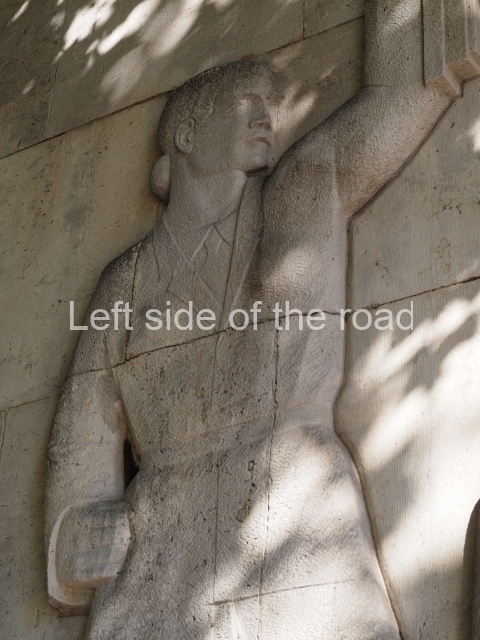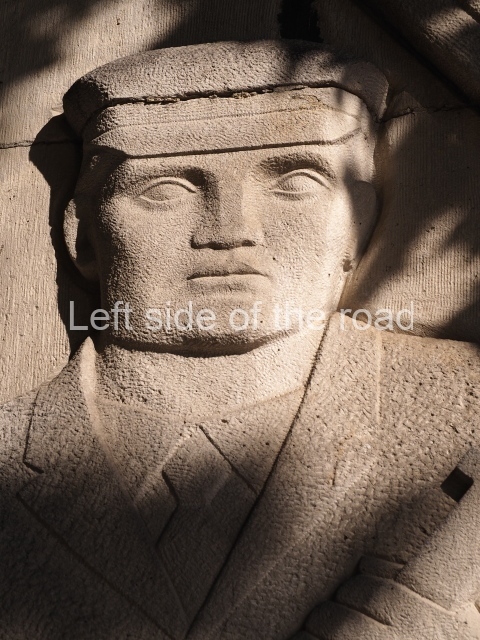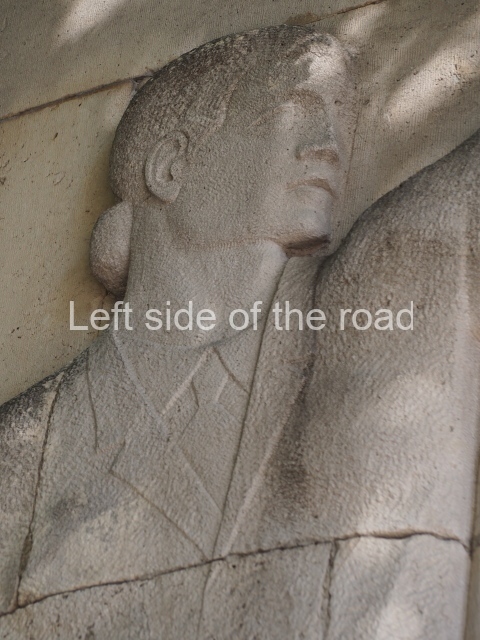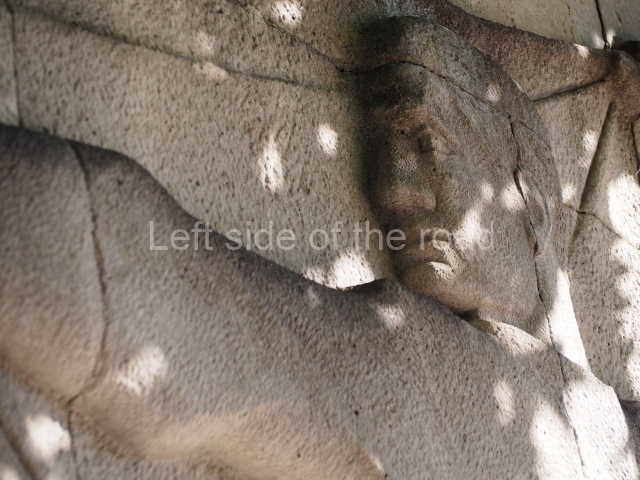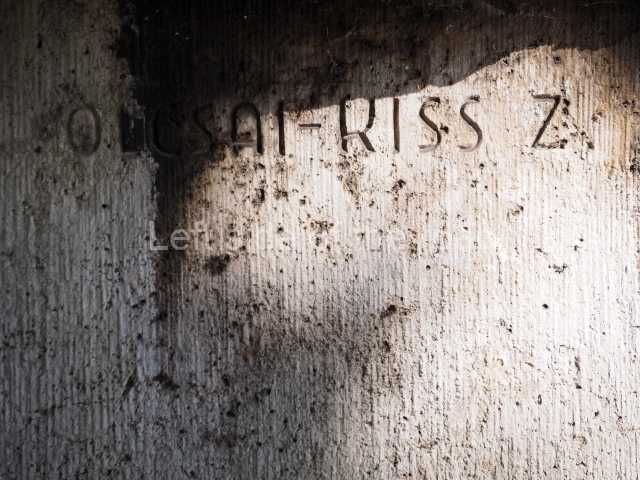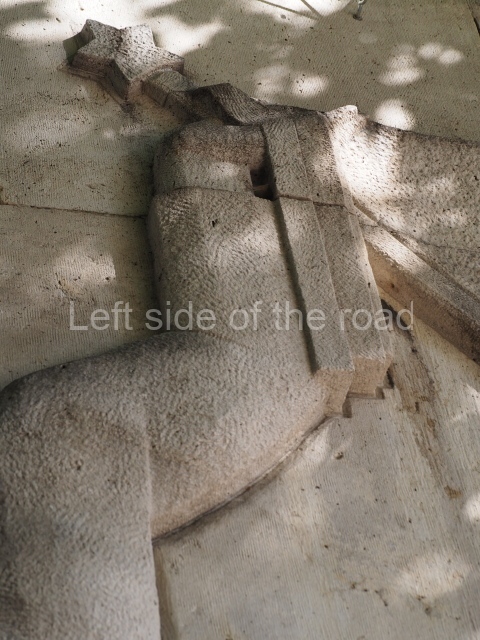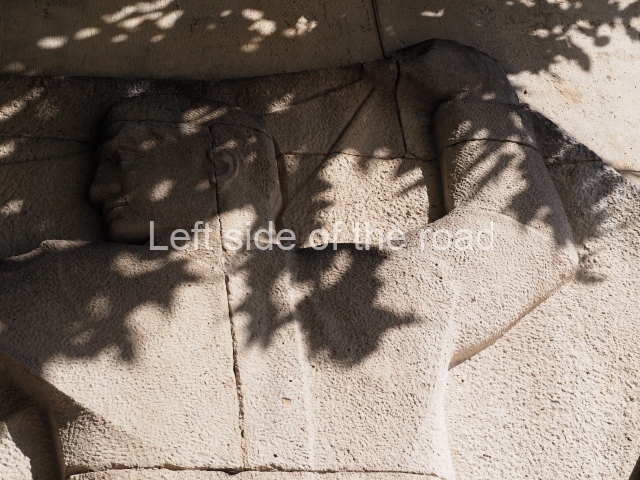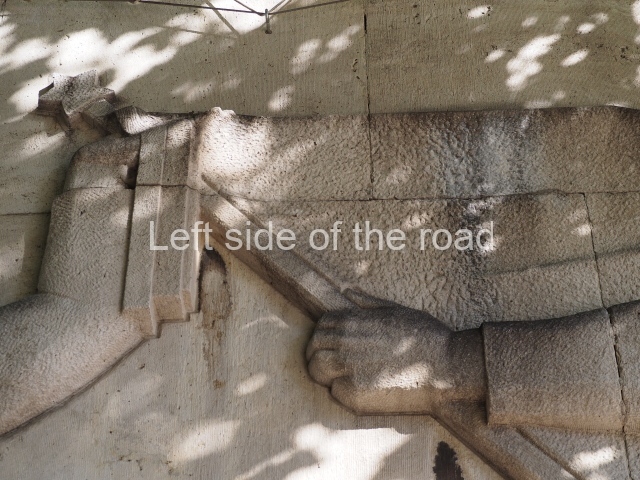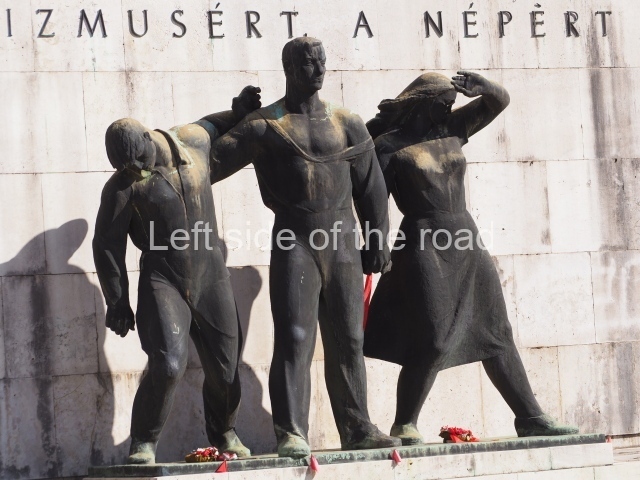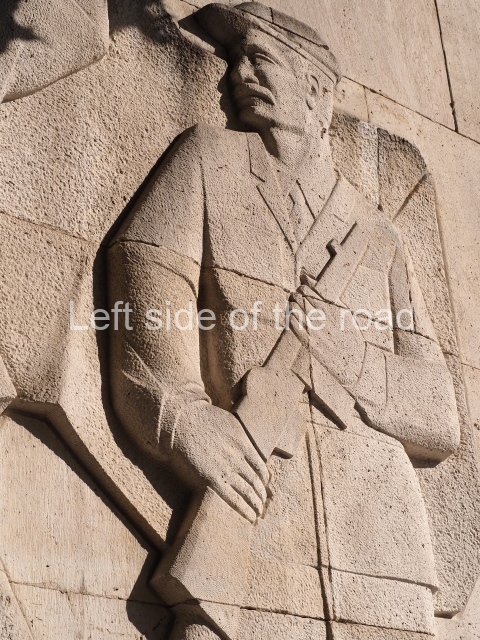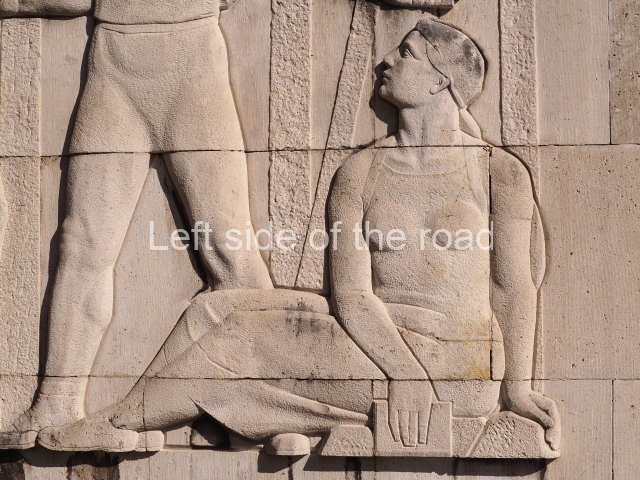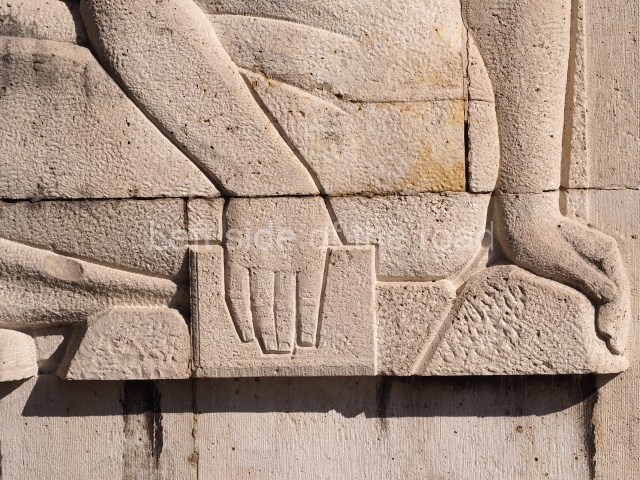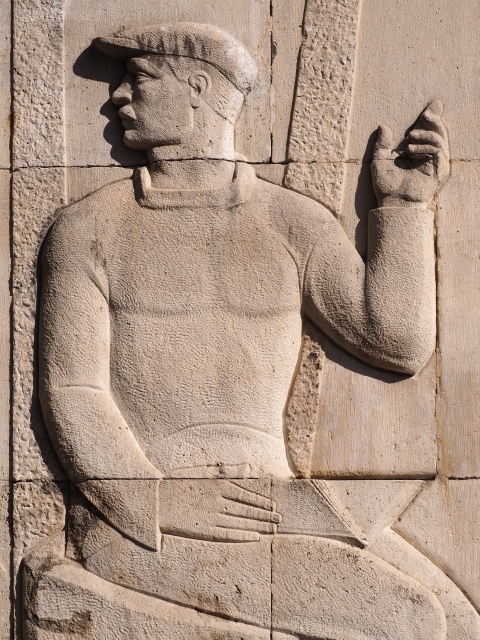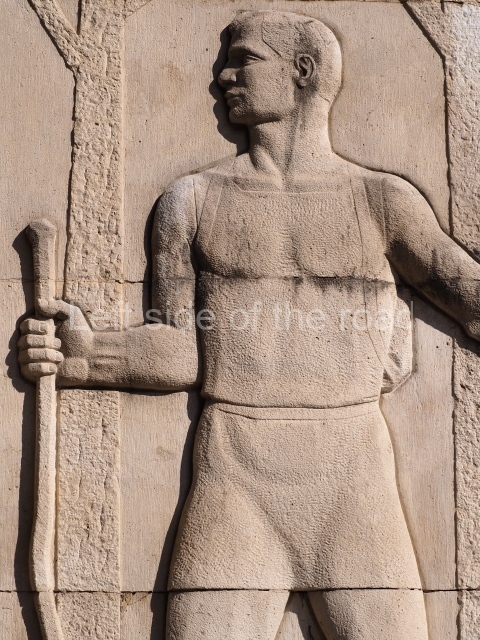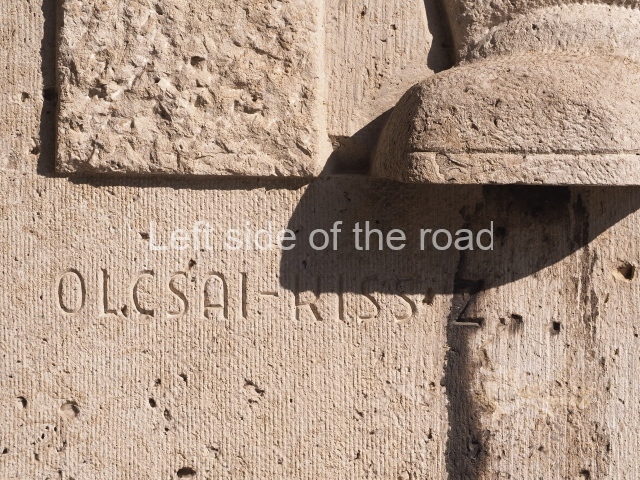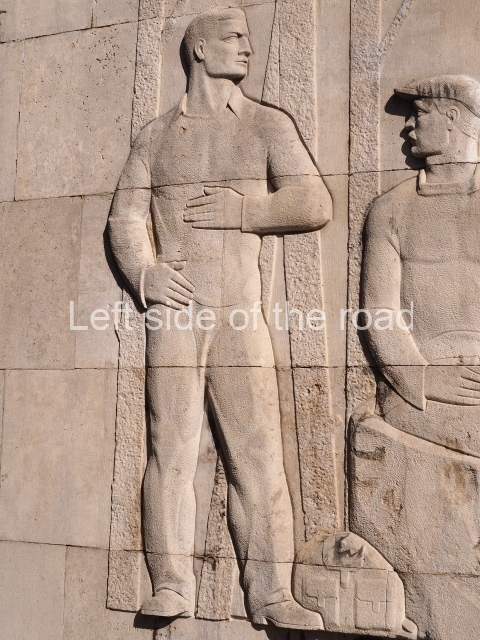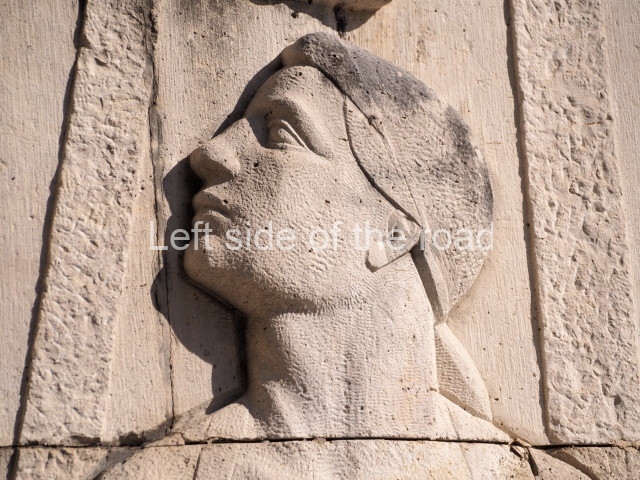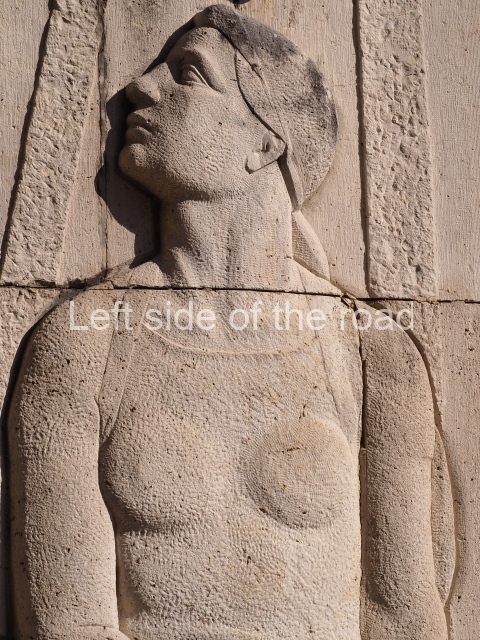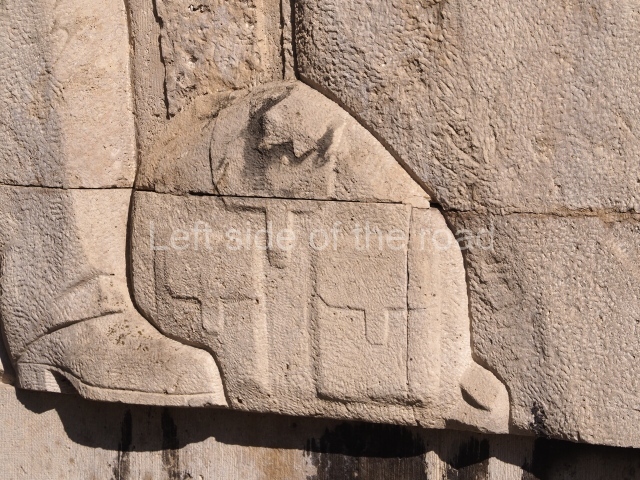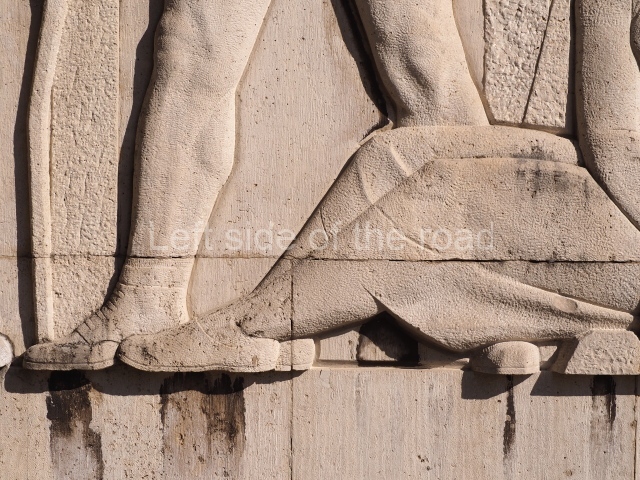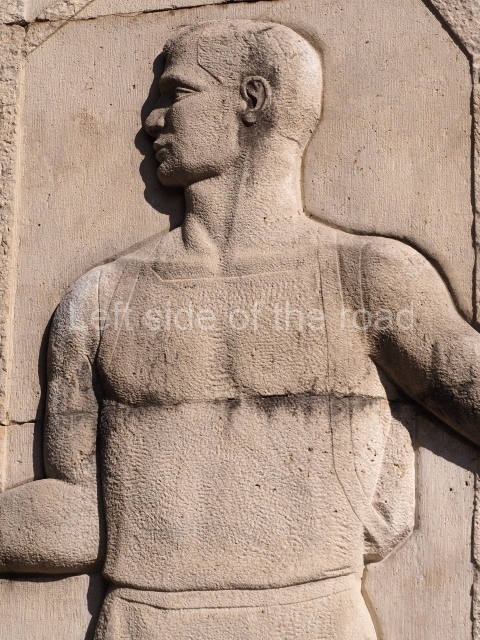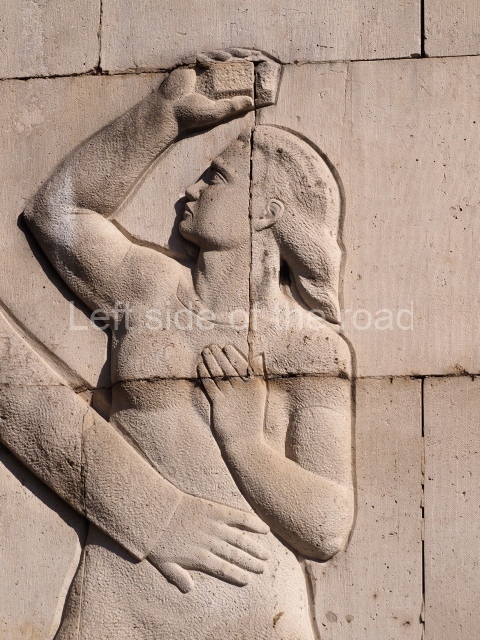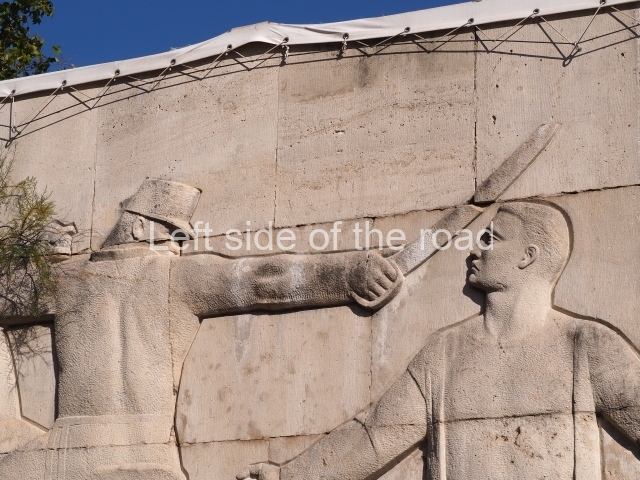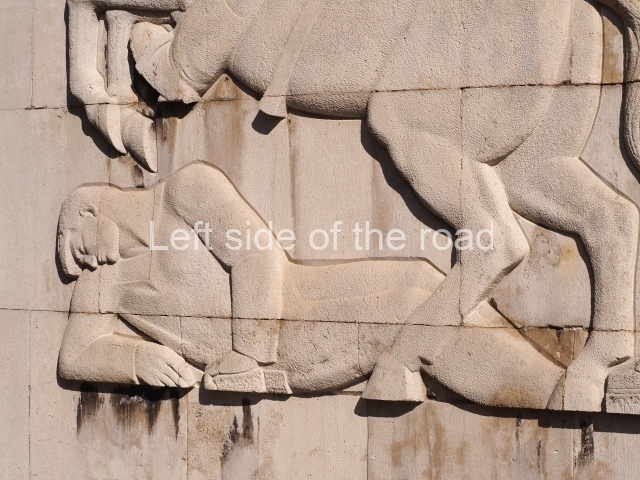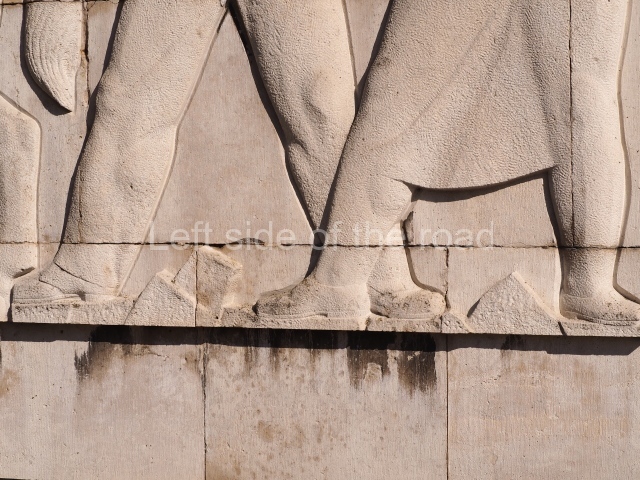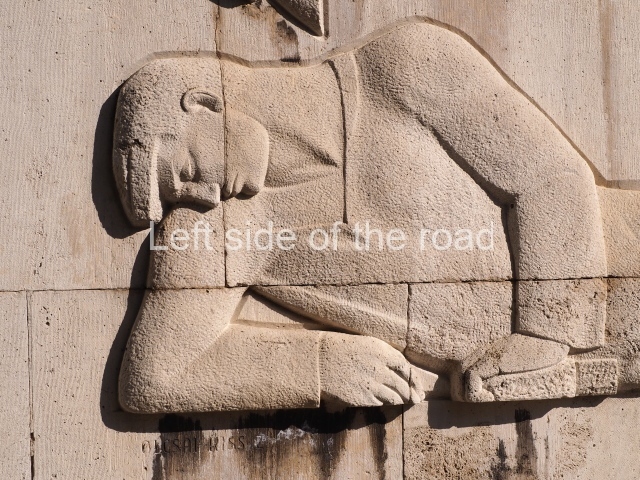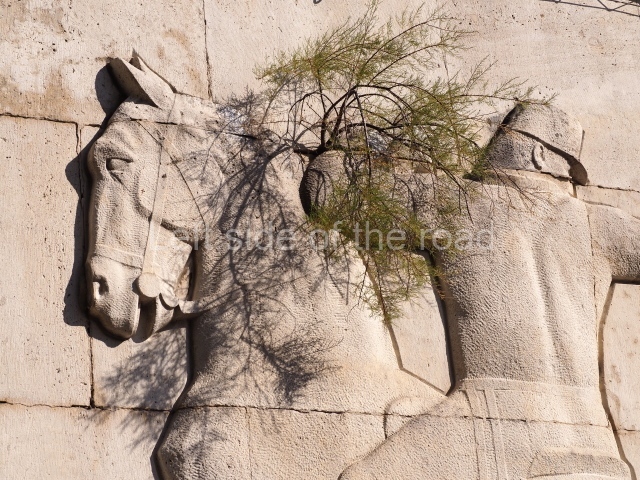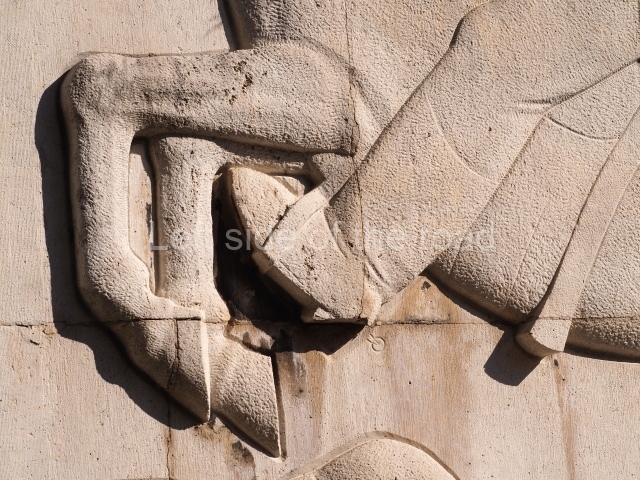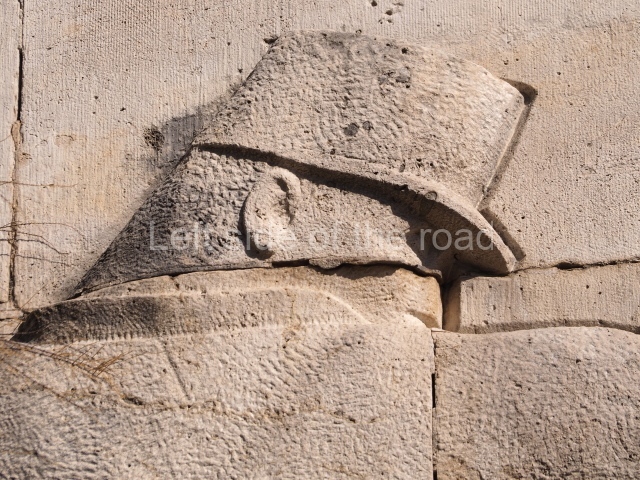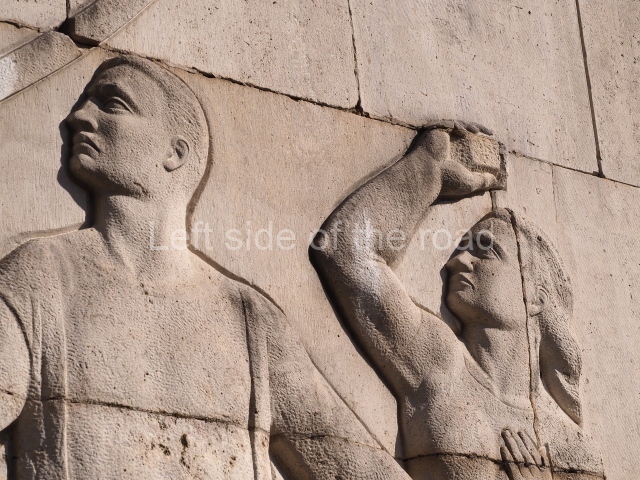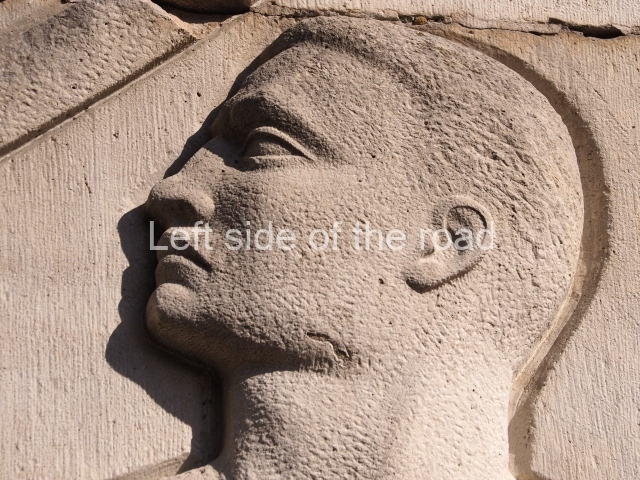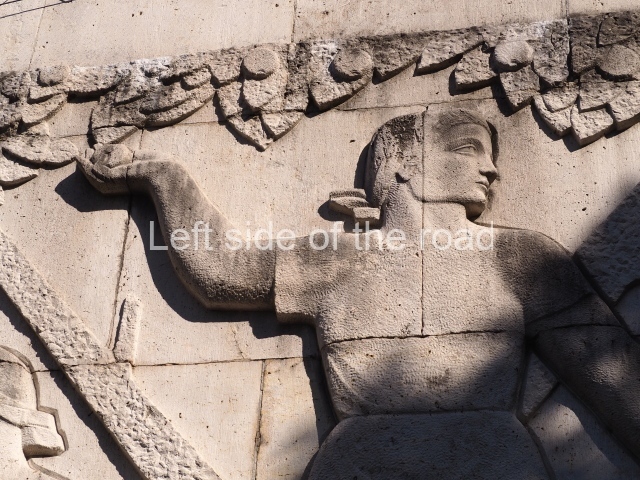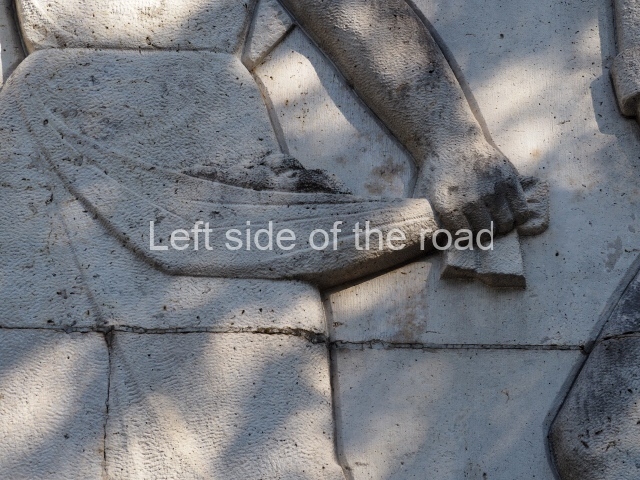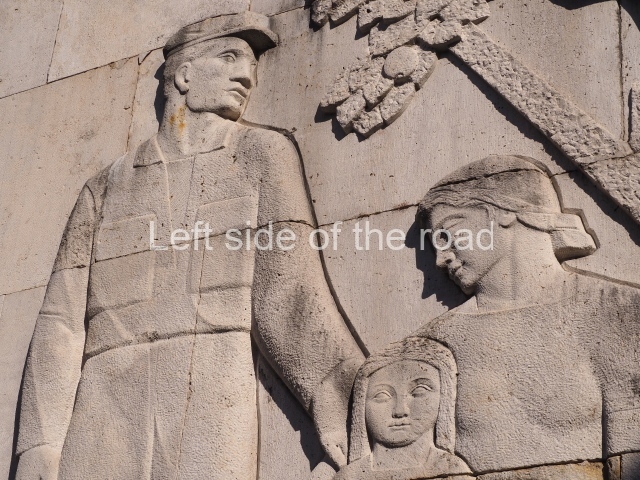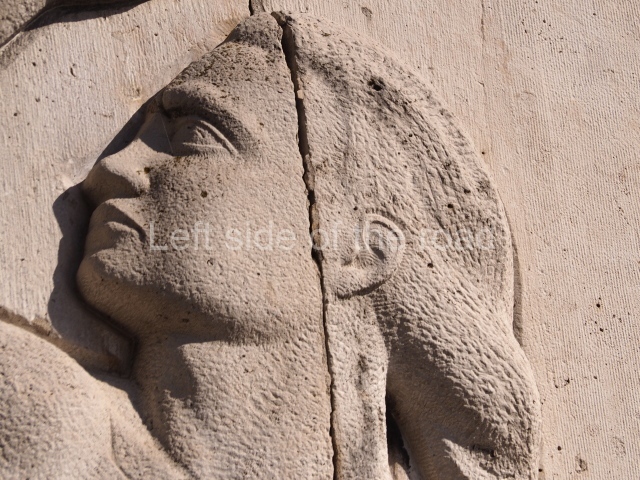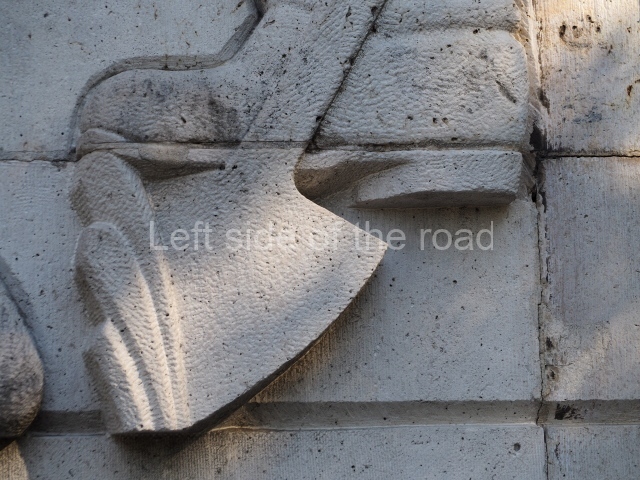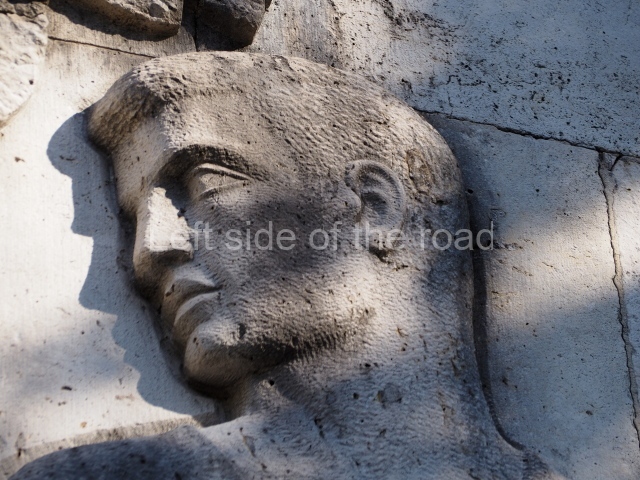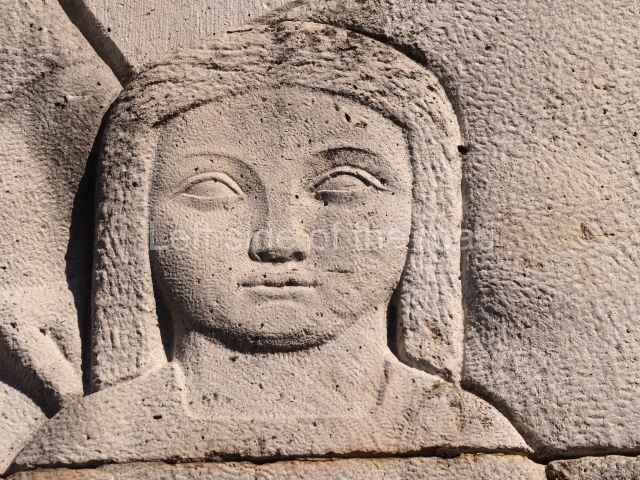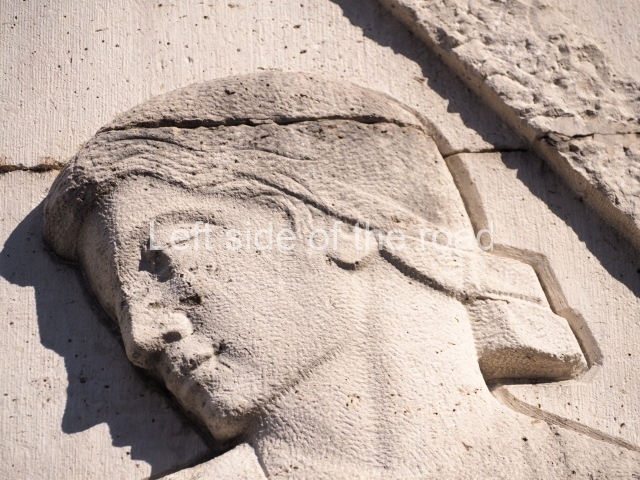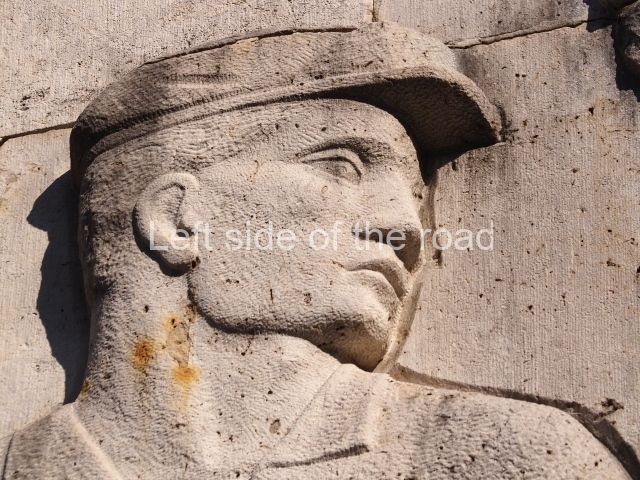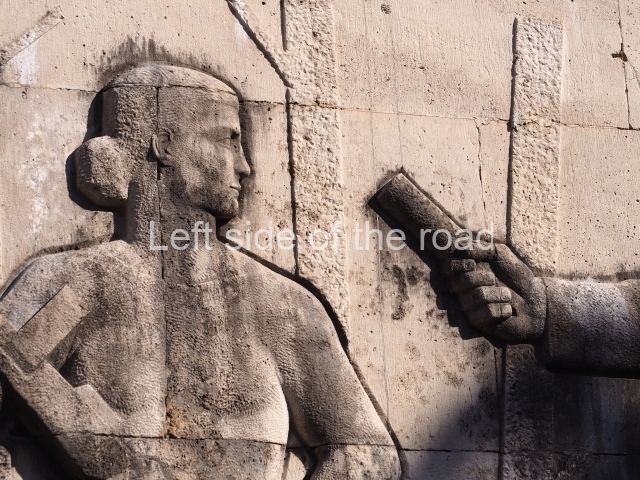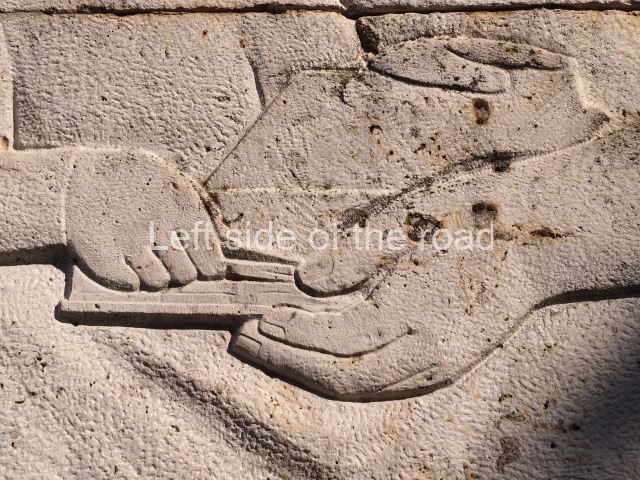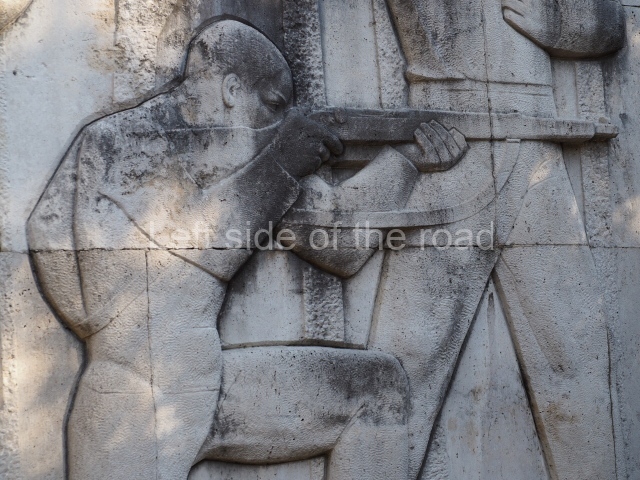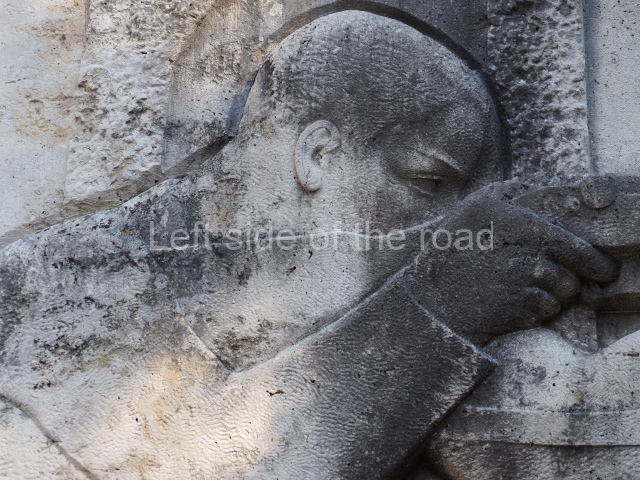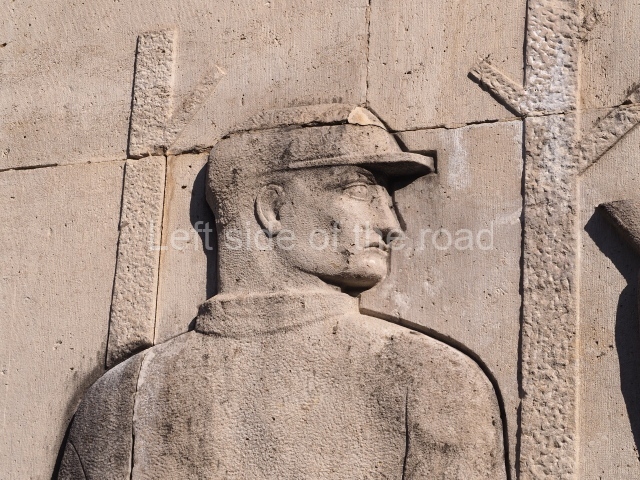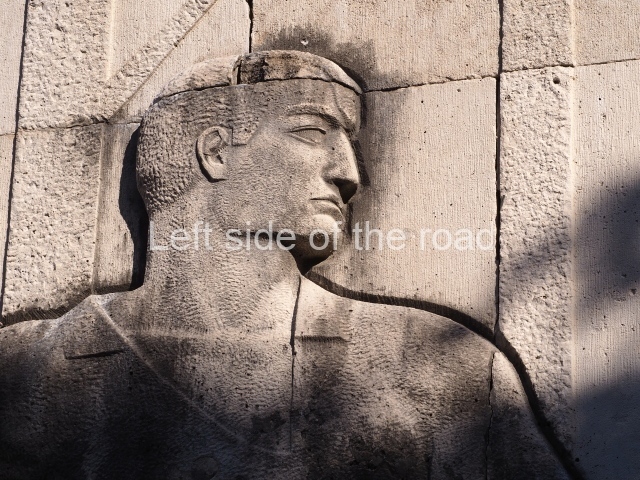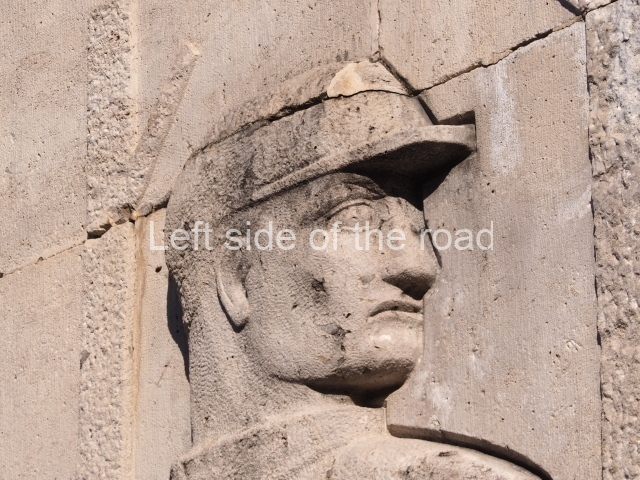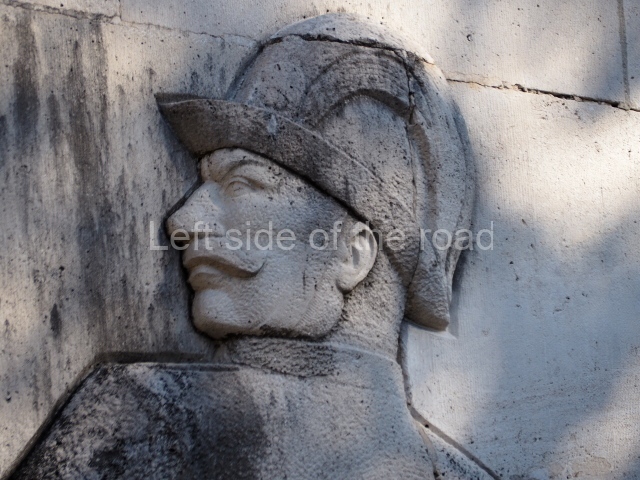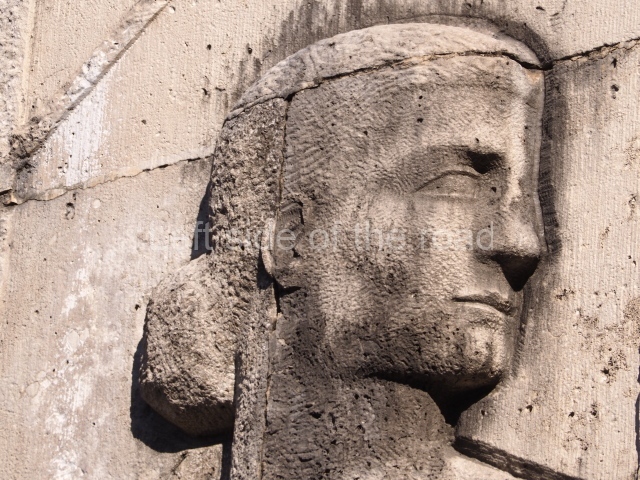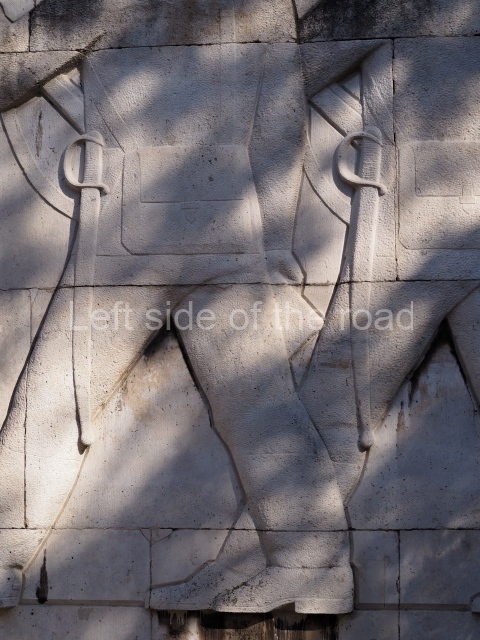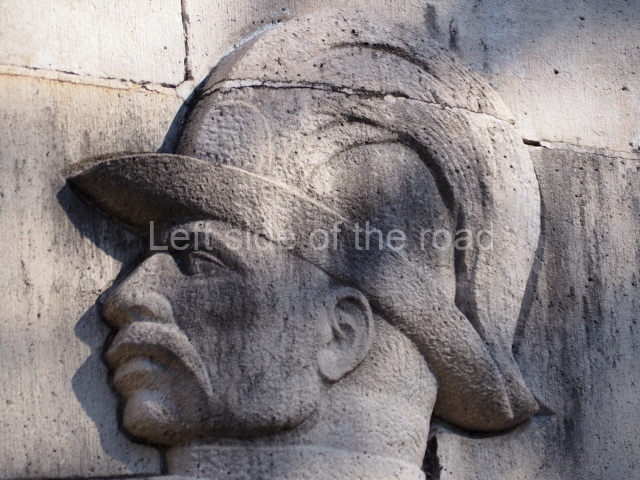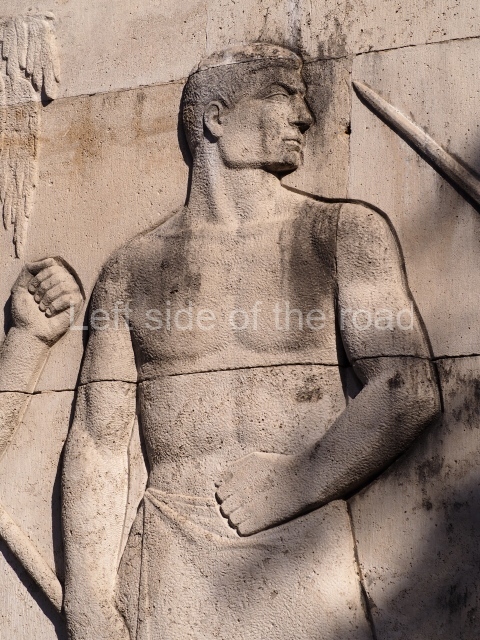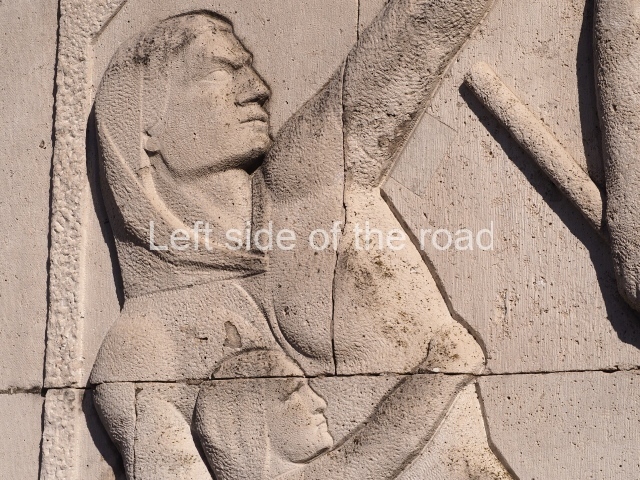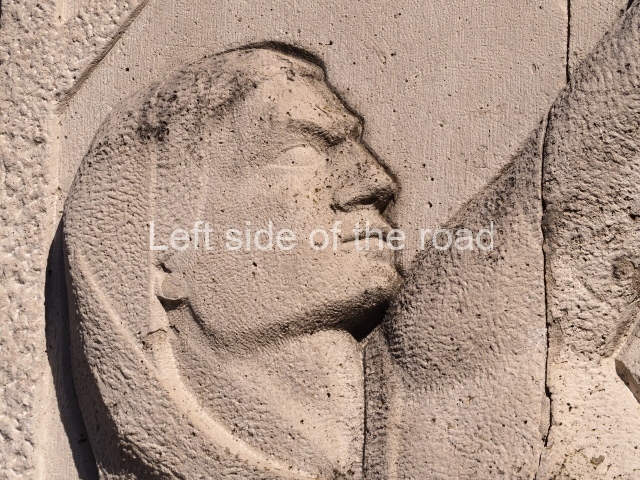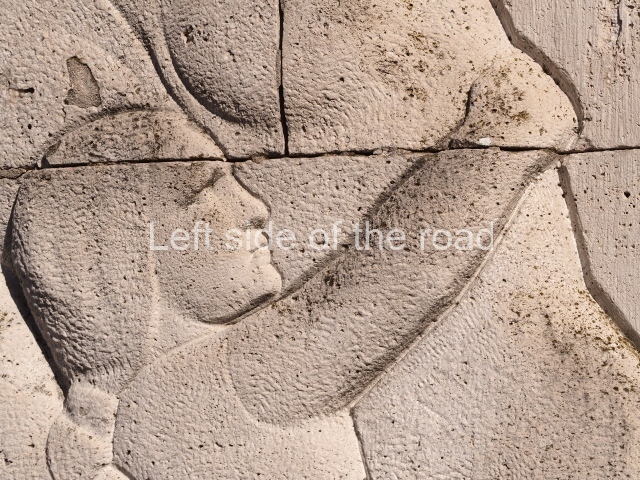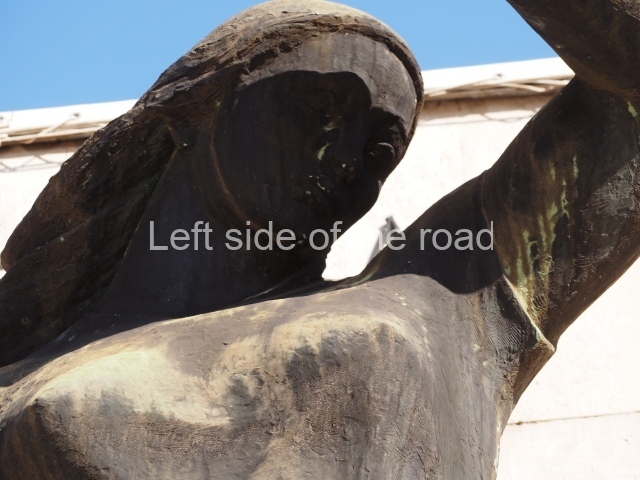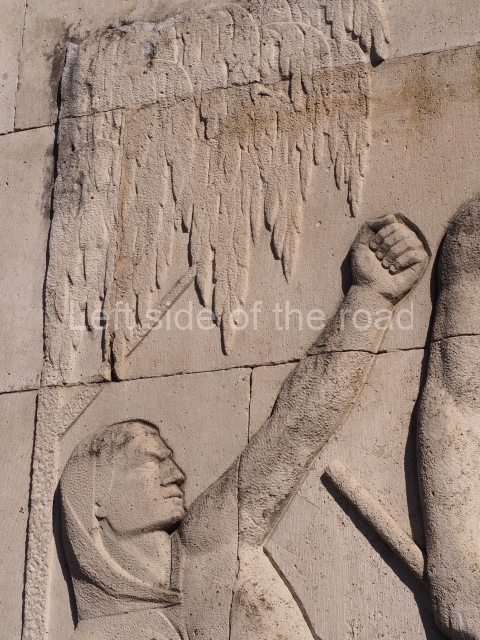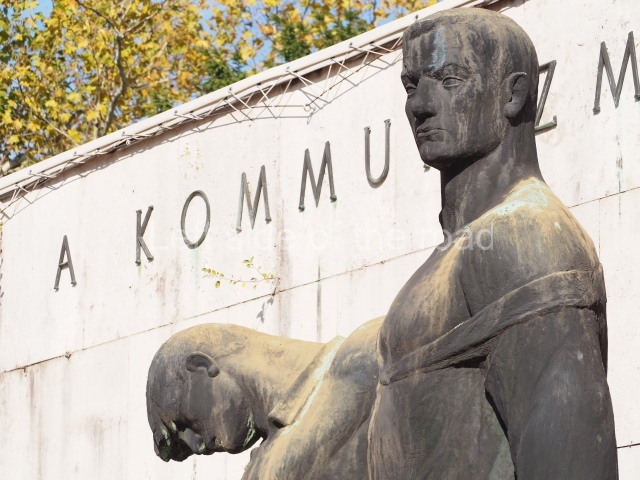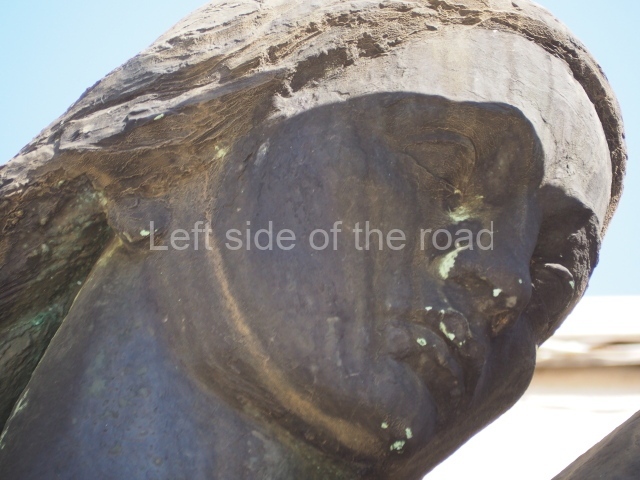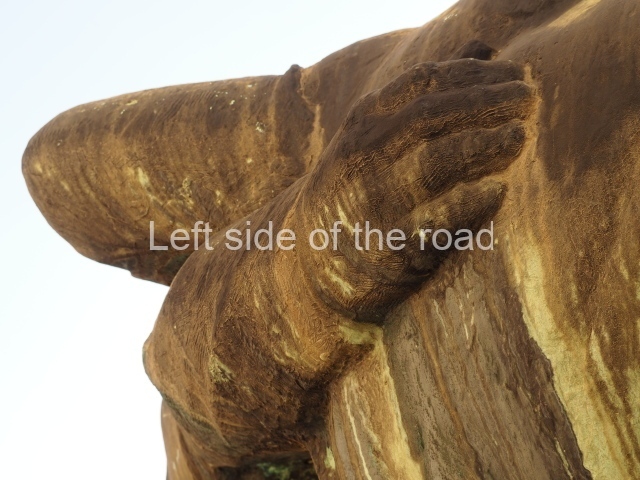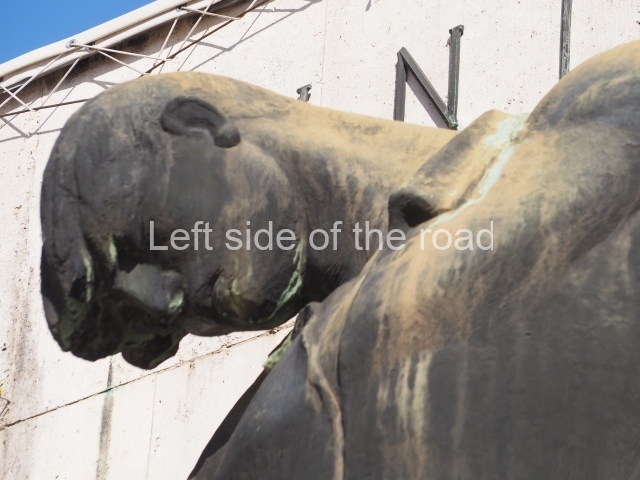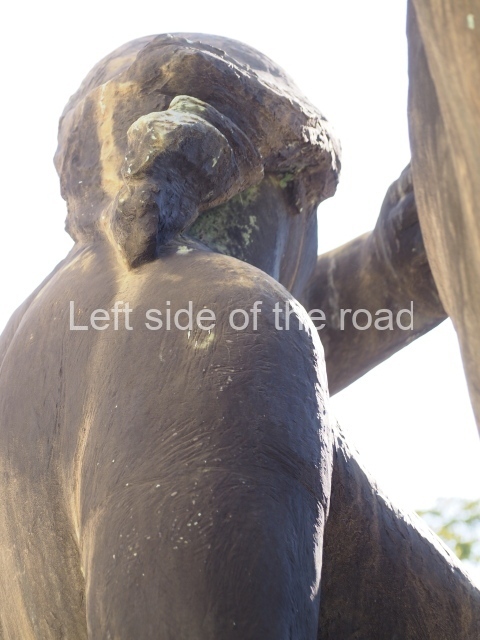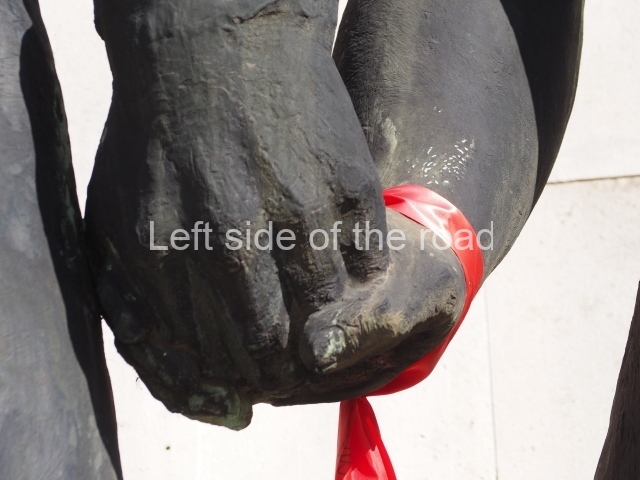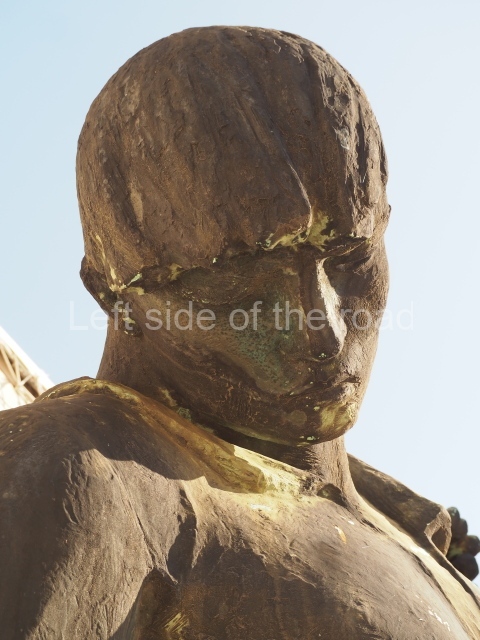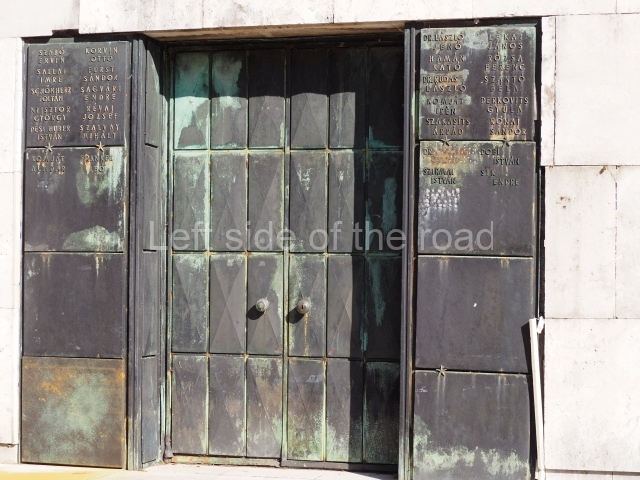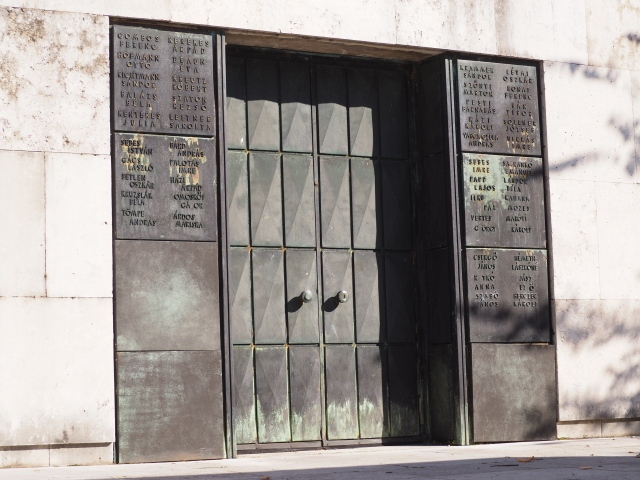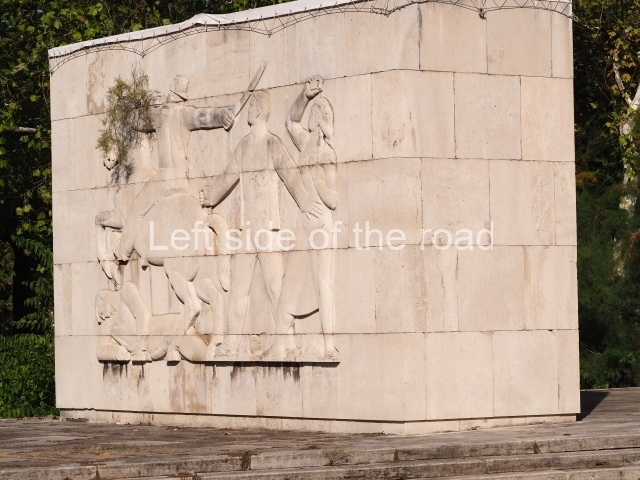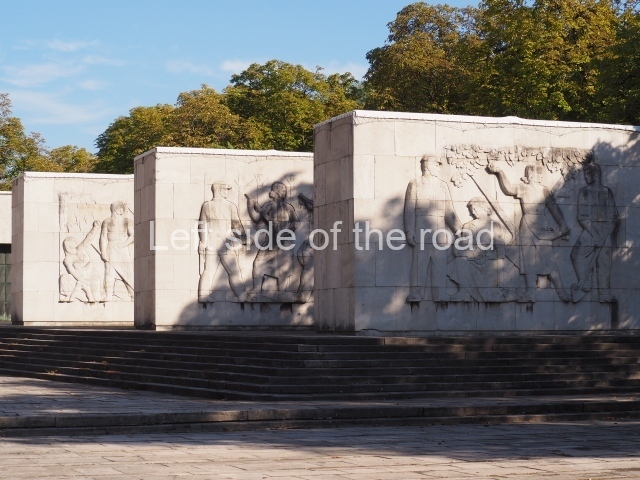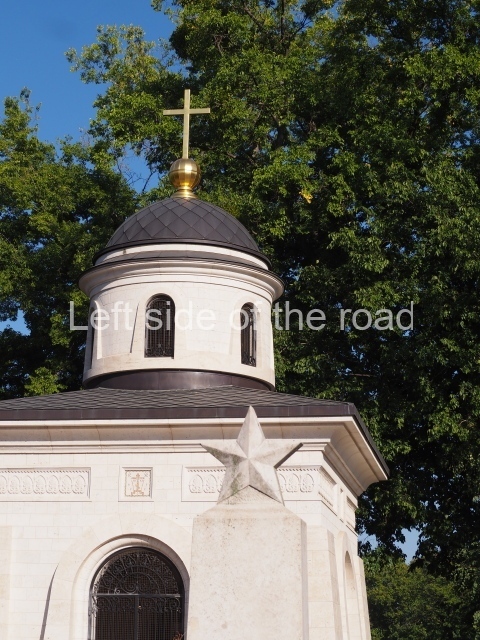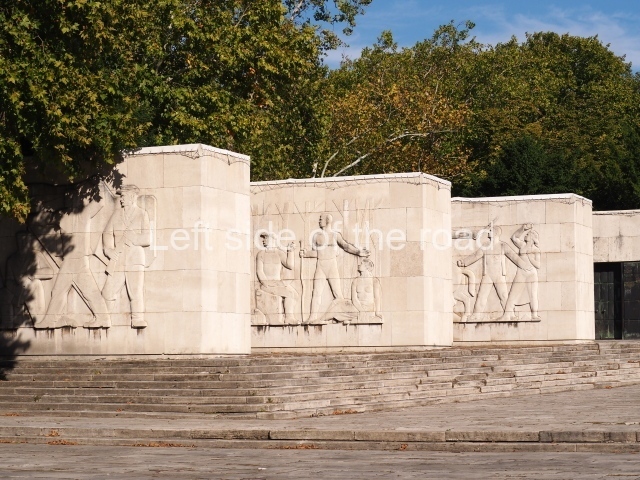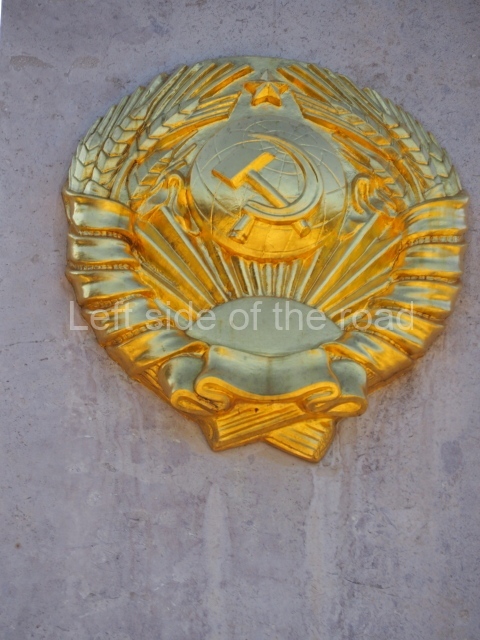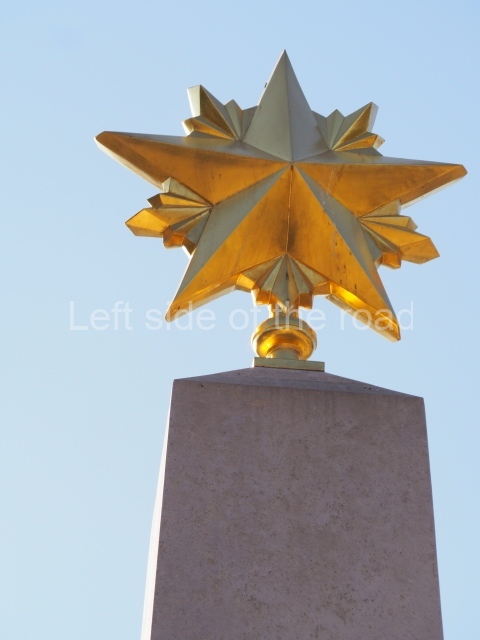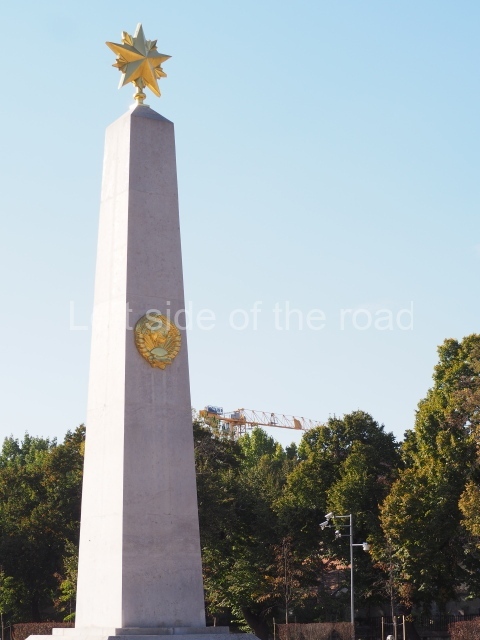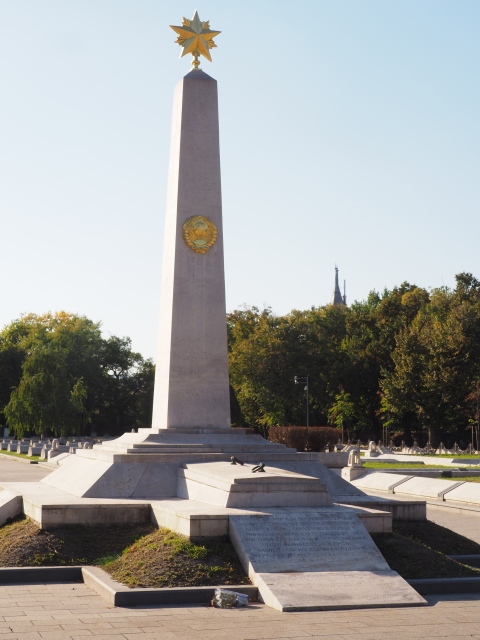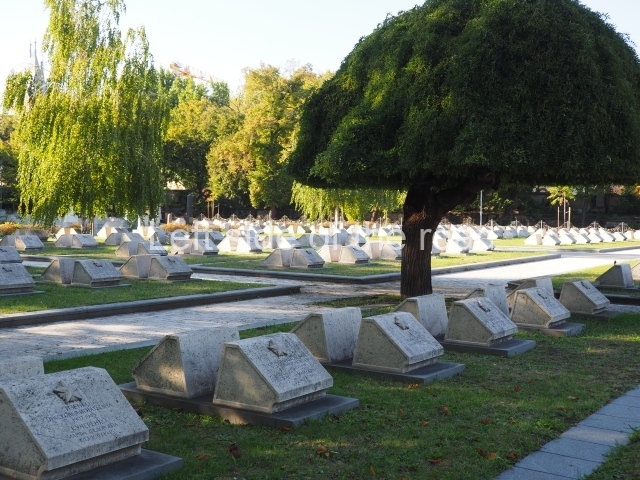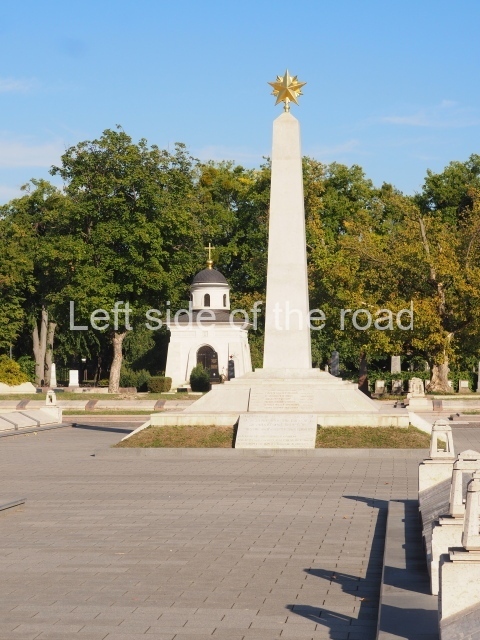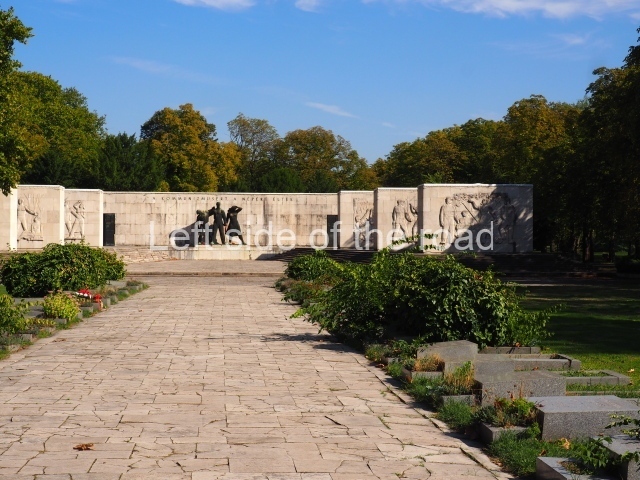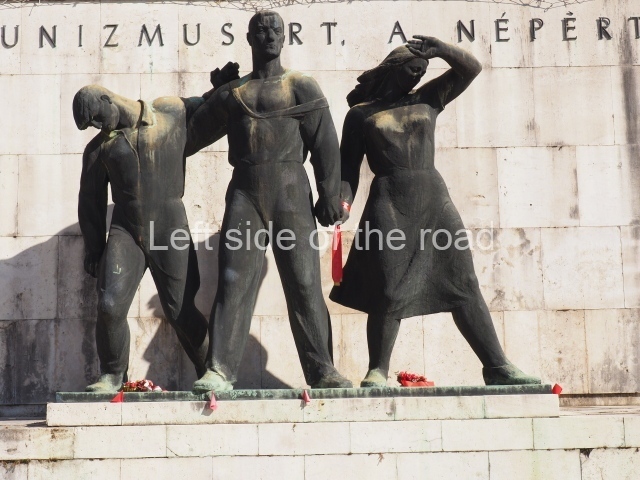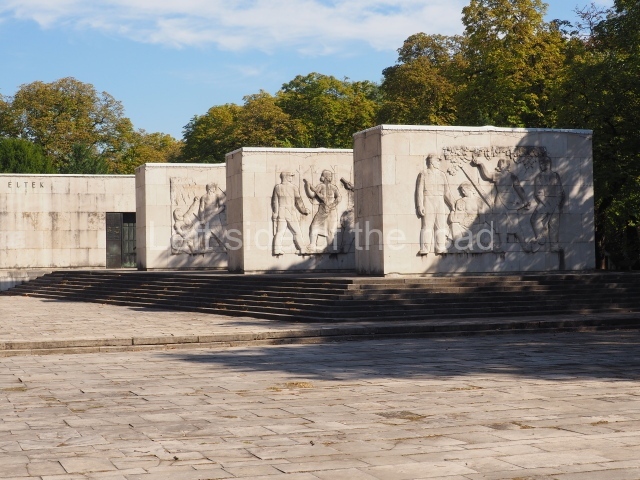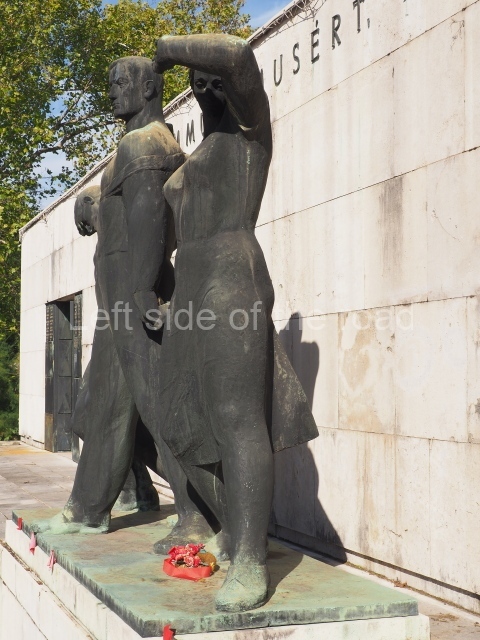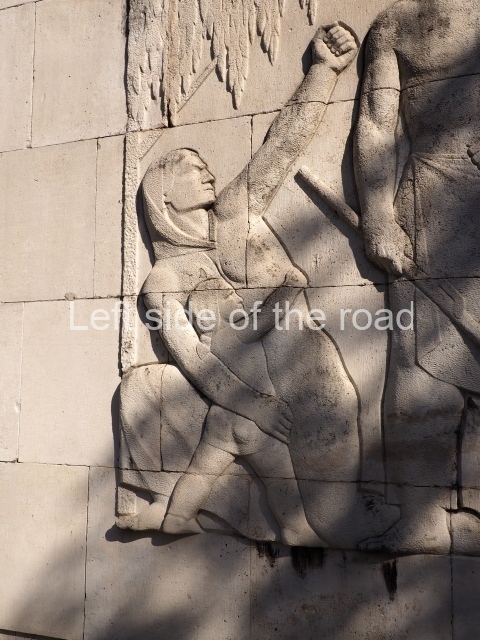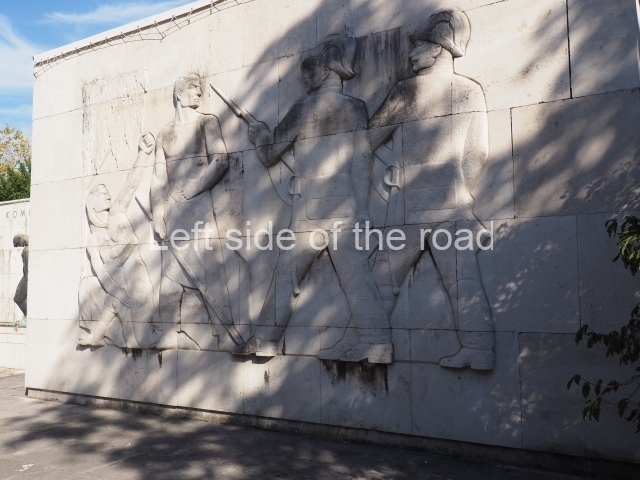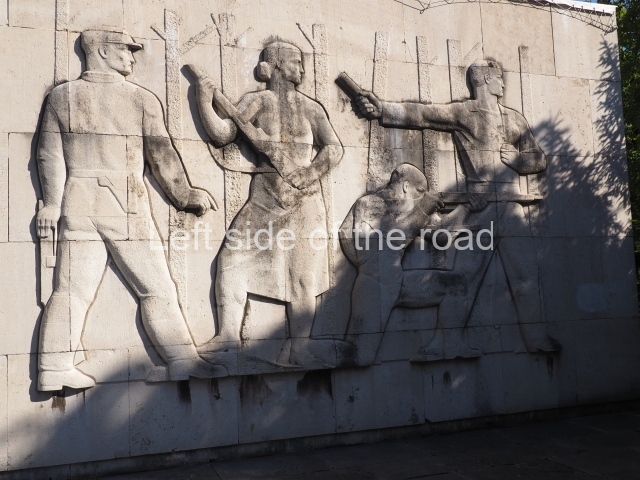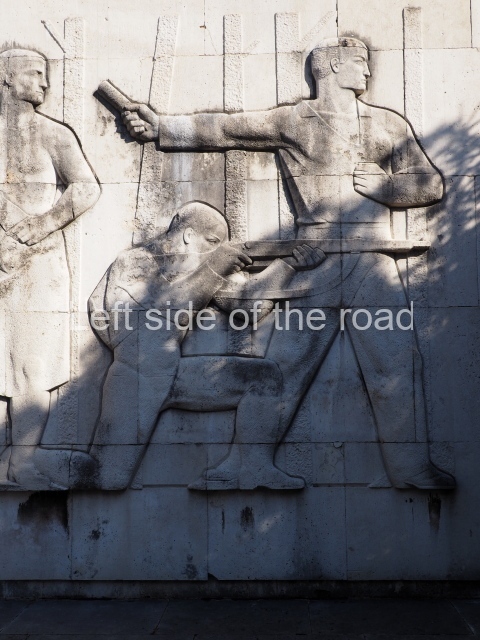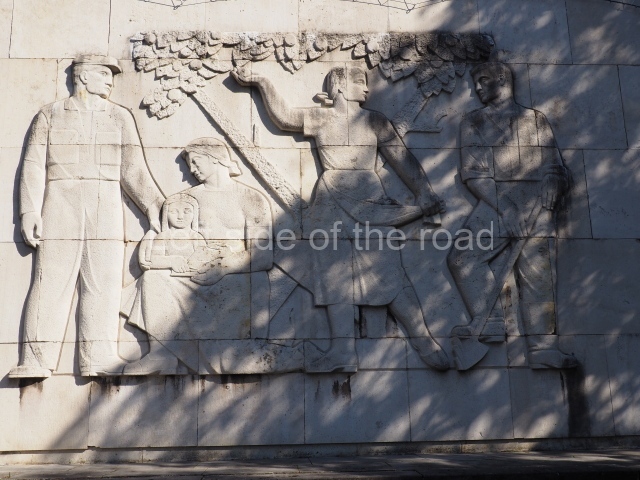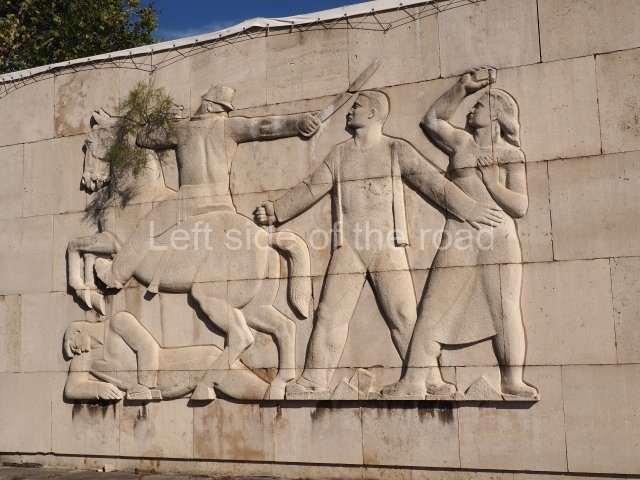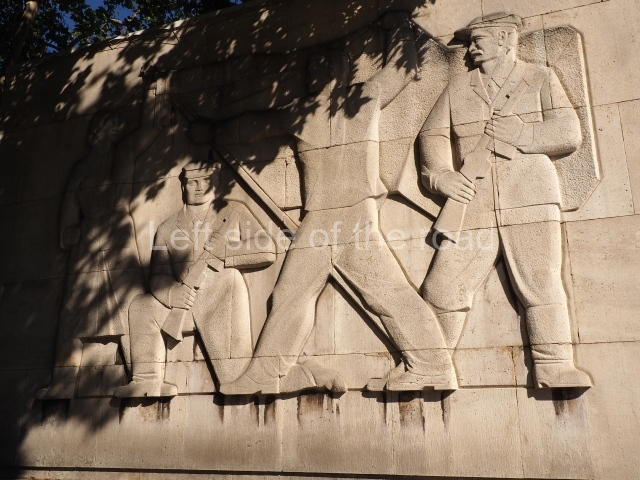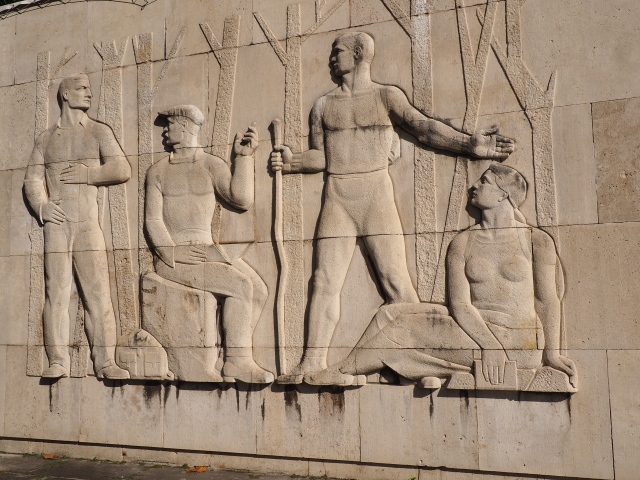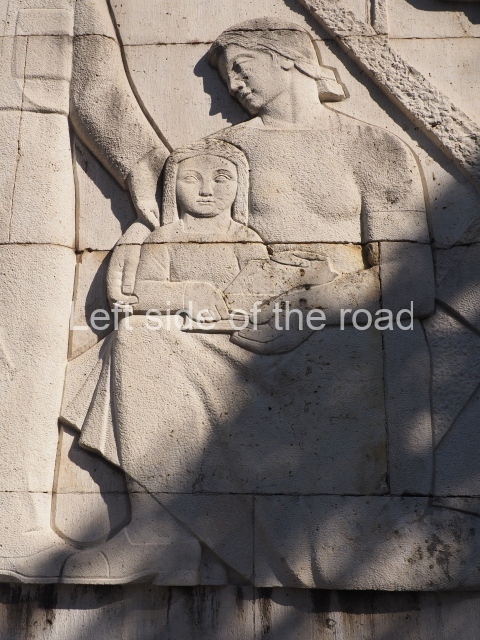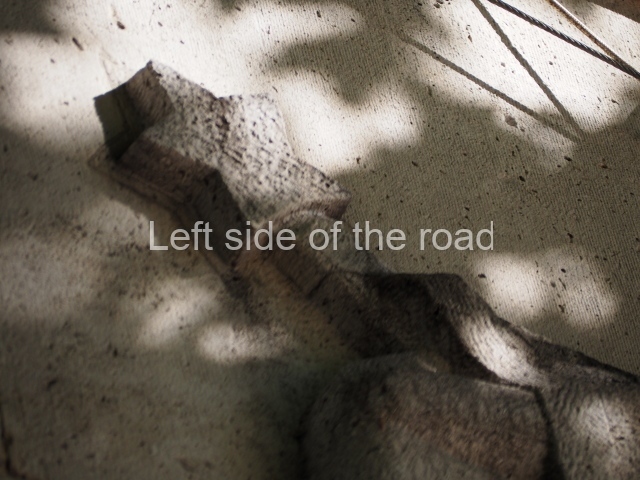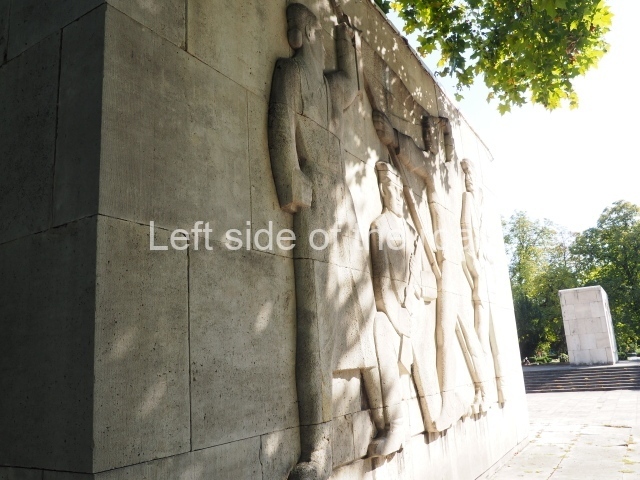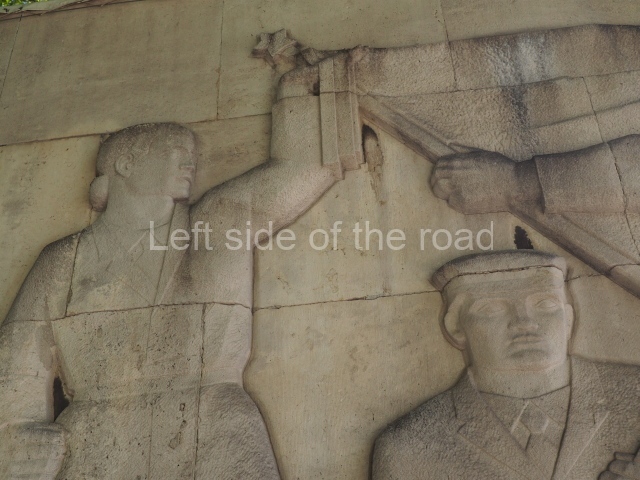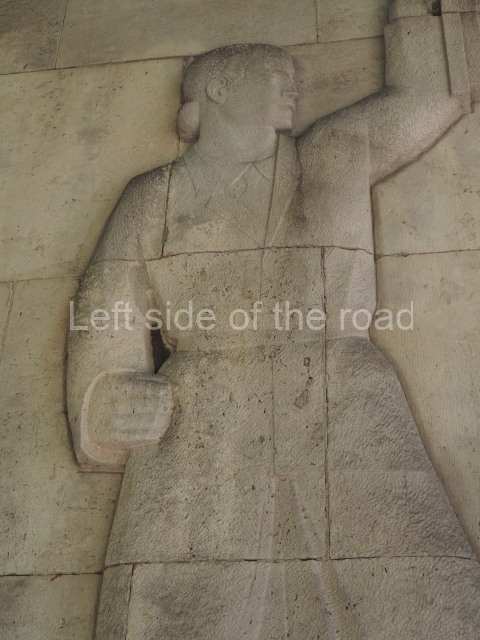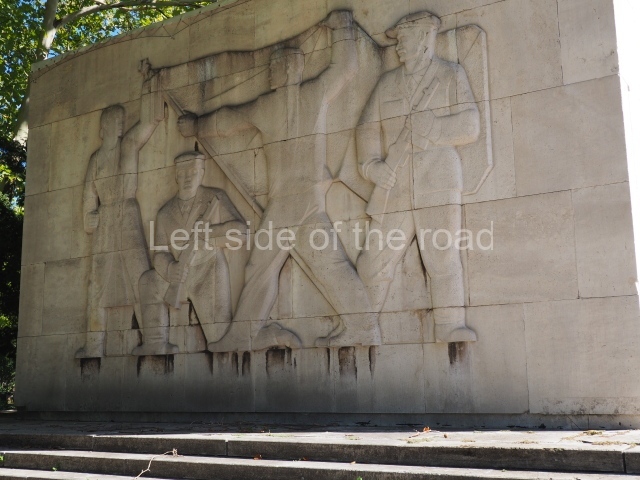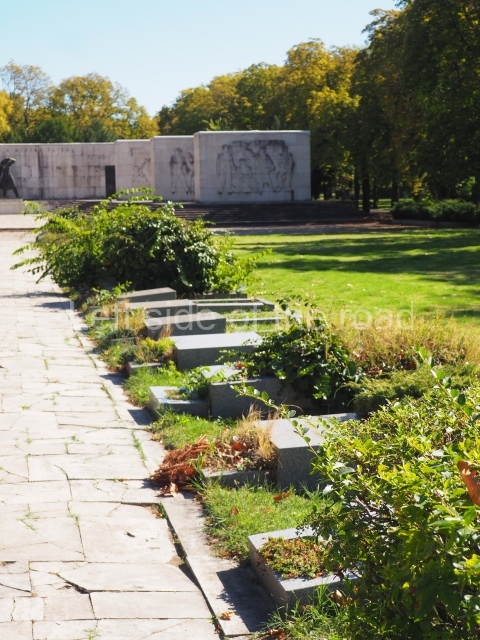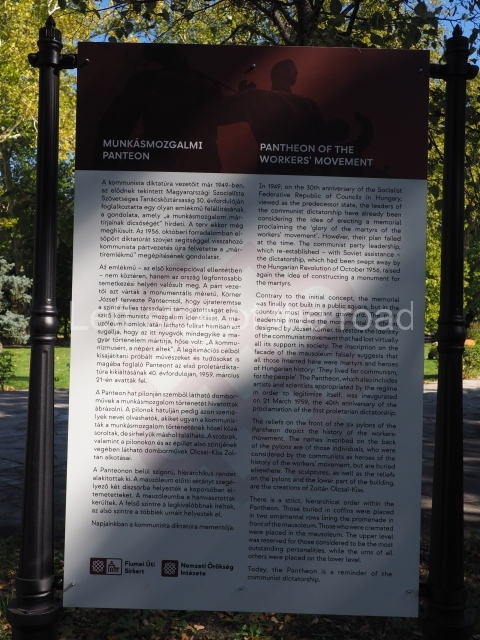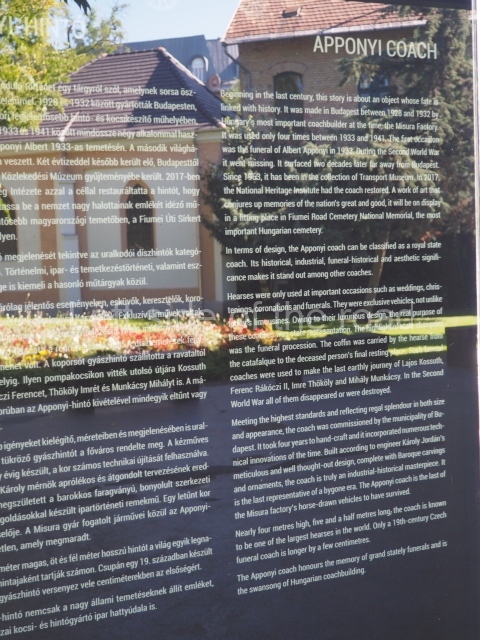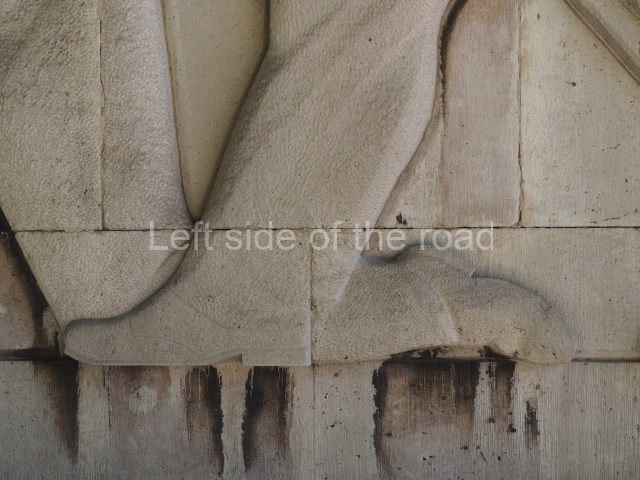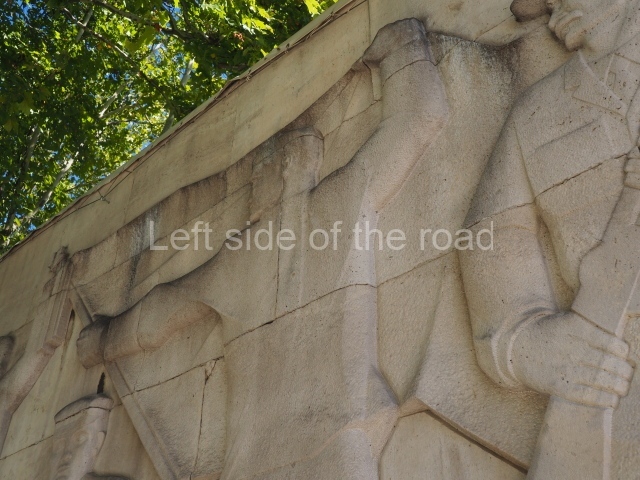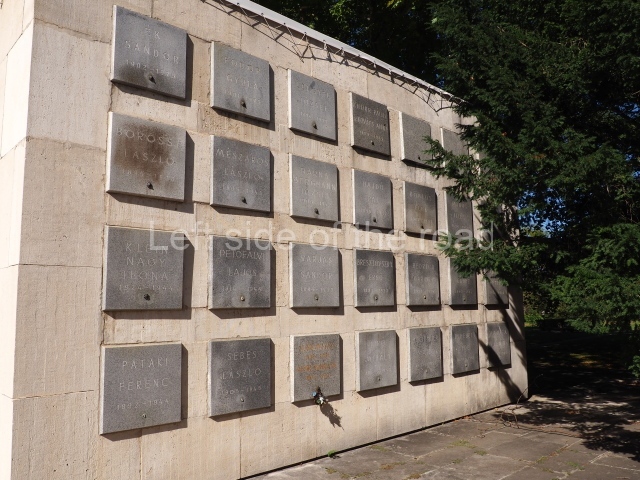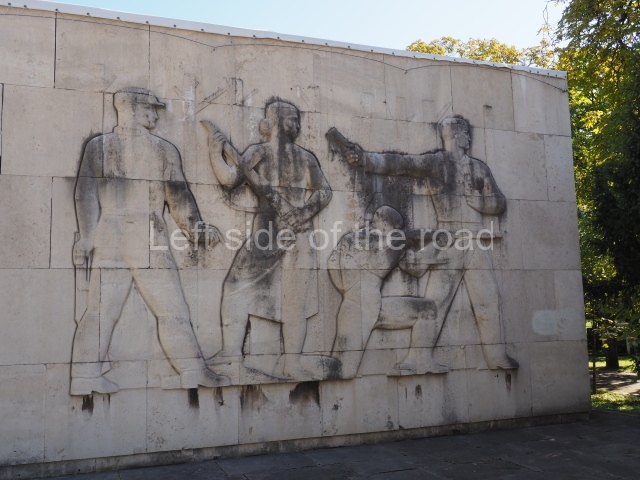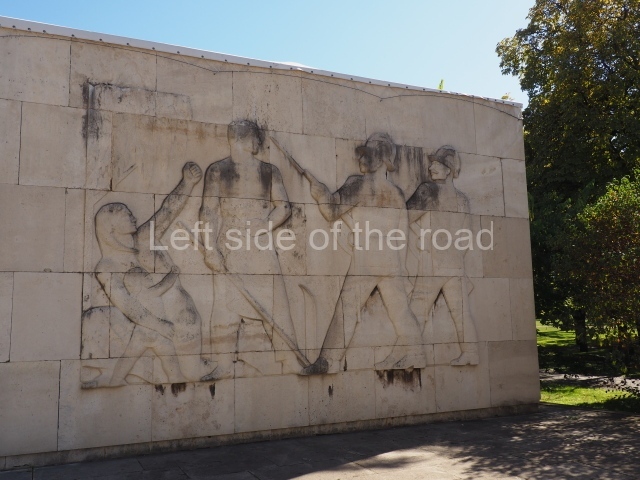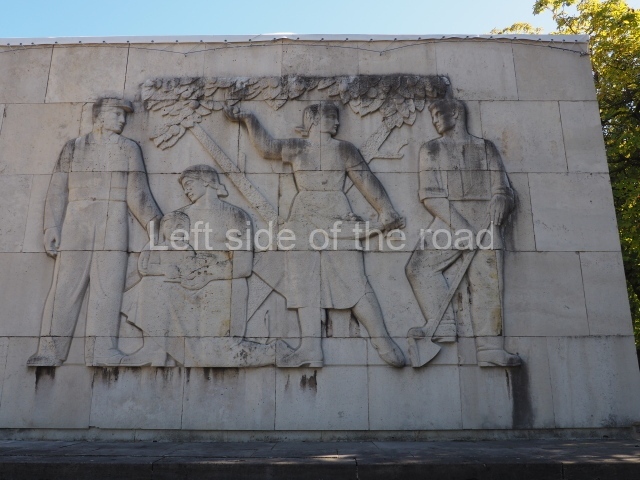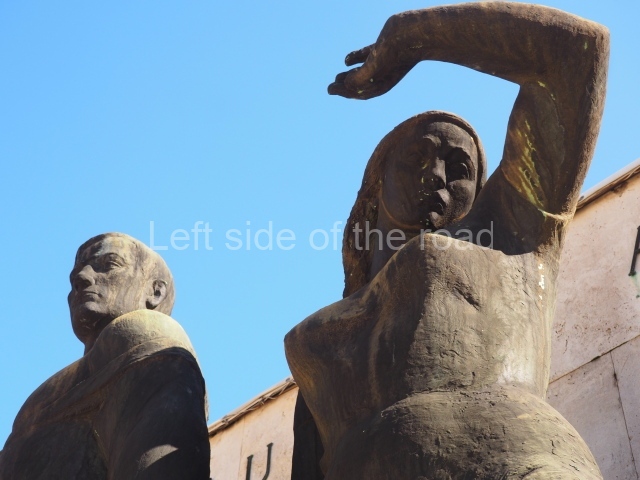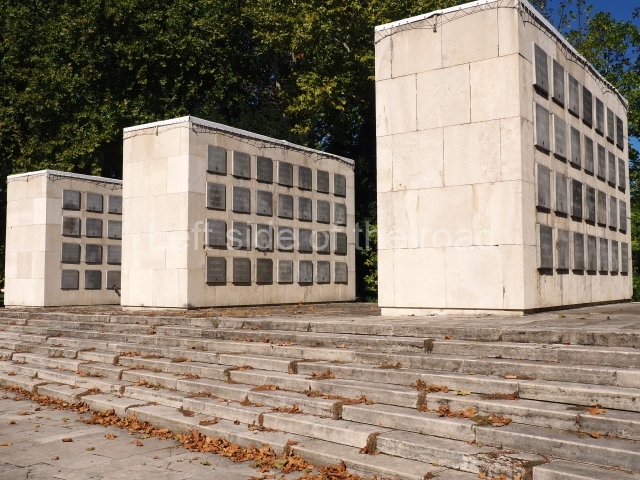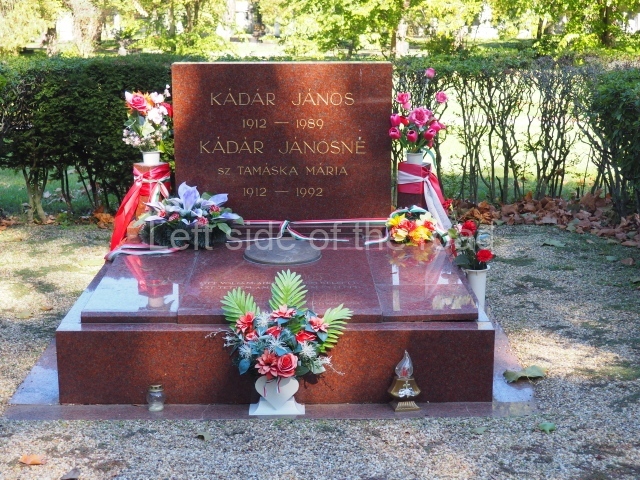Kerepesi/Fiumei Uti Sirkert – Pantheon of the Working Class Movement
Labour Movement Pantheon
‘The Labour Movement Pantheon was built according to the plans of József Körner with the purpose of creating a central burial place for the Socialist Hungary. The mausoleum was inaugurated in 1959. The pantheon was originally designed for 365 urns, but only 75 urns had actually been placed there. In 1989 János Kádár was also buried nearby.’
From the information leaflet ‘ More than a graveyard’ produced by the government.
This is the only monument from Hungary’s Socialist period that is still in existence in its original location. I’m sure the only reason for that was its location in a cemetery. The same goes for the memorial obelisk in the Soviet plot (located a short distance to the left of the main entrance).
As far as I can understand there was quite a radical and thorough removal of any and all monuments that put the period from 1948-1989 in a positive light. This included wall plaques commemorating any Communist, even if they had died in the fight against German Nazism and their local Hungarian collaborators. I’ve encountered one or two bas reliefs on buildings in the centre of Budapest which seemed to have survived the purge – mainly because they could be written off as commemorating workers without any specific reference to Socialism and, therefore, not considered a political threat. There doesn’t seem to have been a lot of symbolism incorporated into Hungarian Socialist Realist art so easy to pass some monuments off as benign.
The Pantheon
The complex is reached by way of a wide path, lined by a mixture of bushes, flower beds and individual grave plots. This path then widens out to a small rectangular platform where any ceremony would talk place for whoever was going to be placed in the mausoleum.
Then, on either side, reached by a flight of eight steps, three large, rectangular pylons. On one side, that facing away from the mausoleum, there are larger than life-size tableau representing the struggle of Hungarian workers and peasants against oppression by the State and exploitation of capitalism. On the other side are plaques with names from Hungary’s revolutionary past – although these are not graves or niches as the individuals are all buried elsewhere.
In the centre, right in front of the mausoleum is a statue of three people.
I’m sure it’s a history written chronologically but not sure where it actually starts as the two opposing tableau seem to represent a similar stage of the struggle.
So starting with those closest to the building and taken from the perspective of the ceremonial square.
On the right hand side there are two soldiers, with late 19th century rifles, bayonets fixed. They are also wearing swords which are in their scabbard. The are threatening a man, who is standing, and a woman (kneeling) as she has her right arm around her little daughter. Although the man is not physically trying to defend himself his stance is one of defiance to authority. The way the civilians are dressed would seem to indicate they are peasants, farmers, and the tree also emphasises the encounter taking place in the country. There’s also the symbolism of the willow tree which is one of reliance and endurance – and in this scenario resistance. That resistance is stressed by the raised fist, against the soldiers, of the mother and even the little girl.
On the left side the pylon depicts a violent encounter between the people and the military but this time in an urban environment. An armed lackey of the state is on horseback (the horse rearing up on its hind legs) and he is either threatening or attempting to strike a demonstrator with his drawn sword. This is not the first time he has used his sword as lying prone on the ground is another male demonstrator, either wounded or dead. The other person in the tableau is a standing woman who has a piece of a cobble in her hand ready to throw at the rider. The demonstrators have prepared for violence as we see that the ground is broken up at their feet so ammunition, in lieu of firearms, is ready to hand.
But at the same time notice how her male companion has his hand at her waist, pushing her back, protecting her, from the possible onslaught that is coming in the shape of the raised sword. This sculpture was produced in 1959 and this action could be interpreted as the male trying to be the protector of the weaker female, as if she is not someone who can look after herself. Perhaps it wil be seen different now. In this situation you have that fine dividing line of protecting a Comrade, any Comrade, and not undermining female revolutionaries.
This scene is very reminiscent of another monument to workers’ struggle which I’ve seen recently and that is the monumental sculpture to the 1905-1907 Revolution outside the Ulitsa 1905 Goda Metro station in Moscow. In that sculpture an armed puppet of the State has already done his worse but others in the demonstration are continuing to fight him with their bare hands or with anything that comes to hand, even trying to pull him off his horse.
So in these two pylons, where I think the chronology could be interchangeable, show the early days of the struggle, when the oppressed and exploited are fighting but not in an organised manner and always at a disadvantage as the State has a monopoly on organisation and weapons. The people have the will and the courage but they still lack what they need to overcome the enemy and win.
And one of the things the workers and peasants need if they are to achieve victory is an ideology and the theory of Revolution.
That, I believe, is what is being presented in the next pylon on the left. Here we have four people, three men and a young woman. They are in the countryside (as indicated by the trees in the background) but they are not people of the countryside. Both the young man and woman on the right have rucksacks on their backs and the man has a long stick to indicate that they have walked from the city/town to the countryside to avoid the spies that are everywhere in a modern urban environment (then as now). Those two young people, as well as the older man in the middle, are all looking in the direction of the standing, slightly more mature male than the youngsters, as if he is in the process of making a presentation, making an argument. The young woman has her right hand on the open pages of a book and the older man, who is sitting down, also has an open book on his lap.
Who might be actually speaking at this moment is open to question. The standing young man on the right is making a sweeping gesture with his left hand and the man sitting down has his left arm raised as if he is wanting to say something. The woman is not contributing at this moment but is intently listening to what is being said. So I think this depicts a study group that’s taking place as such groups are illegal and so they have to leave the city to discuss and learn the theory of Revolution. Also note the satchel on the ground at the feet of the standing man on the left. Could this have contained the illegal books of Marxism he has brought to distribute to his ‘students’?
‘Philosophers have hitherto only interpreted the world in various ways; the point is to change it.’
Karl Marx, Thesis on Feuerbach, see in the Appendix of Engels’s book ‘Ludwig Feuerbach And the Outcome of Classical German Philosophy’, pp73-75.
But it’s all very well knowing what to do and why. Next comes action, putting all that theory into practice.
And that’s what we see in the next pylon, the second one from the mausoleum, on the right. Here, again, we have four individuals, three men and a women, who are turning that theory into practice. They are all armed and in the process of fighting the forces of reaction. However, it’s slightly strange as the trees in the background would seem to indicate that they are still in the countryside but they are dressed as proletarians and would be more at home involved in an urban revolution, insurrection, than a protracted struggle in the countryside.
It’s even stranger when you look at the weapons they are using as these are weapons from the early 1940s, when the Soviet Red Army (with the assistance of local Communist Partisans) liberated Budapest from the German Nazis and their Hungarian collaborators. The man standing on the right is about to throw a stick grenade and in front of him is another man, kneeling, aiming and firing a rifle (I don’t know what type). Now these weapons were available from the 1914-1919 war onwards but what starts to date the image is the weapon that the woman is holding, although not yet pointing at the enemy.
(I have made a point of emphasising that in Albanian lapidars if a woman is depicted in an image, be it a statue, bas relief or mosaic often the men aren’t armed but the women are, so it’s good to see in Hungary that there was also the idea that women are fighters and not just passive, non-combatants who support in a more passive manner. Unfortunately many women seem to have forgotten that once you are armed you should never give up your weapons. If you do things will go backwards.)
Her weapon looks very much like the PPSh-41 submachine gun, an almost standard weapon for the Red Army and Partisans in the Great Patriotic War. You can see images of these in the hands of Red Army soldiers on the semi-circular bas reliefs on either side of the Monument to the Soviet Red Army in Liberty Square in the centre of Budapest.
But going back to the bas relief on the pylon, the last figure looks like an officer or Commissar. As in most 20th century armies the officers were distinguished by the fact they carried a revolver – but he also carries a submachine gun. It was almost certainly a mistake that this distinction between ranks became more evident in the Red Army after the Nazi invasion of the Soviet Union in 1941. (See my comment about only officers being commemorated on the Monument to the Soviet Red Army.)
The final two pylons are difficult to separate when it comes to chronology.
They both seem to depict the victory of Socialism. The war is over and the battle has been won.
On the left we have very well dressed men (3) and a women but they are not in a normal military uniform. There seems to be some sort of ceremony going on here – hence the formality of civilian dress – revolving around the raising of the flag. If we start from the right men one and three seem to be on a sort of guard duty. Man number two is holding a flag pole with his left hand and is straitening out the flag itself with his right so in this image the flag (obviously the Red Flag) plays the part of the background to tableau. The woman standing on the left is holding the top of the pole with her left hand and the ribbons to the ferule fall over her hand. Surmounting the pole is a star.
The final pylon shows the construction of Socialism. We have quite a bucolic scene. On the right there is a man digging the soil (I like the way the soil been raised is depicted here) and at the same time he is looking lovingly into the eyes of a young woman who is picking apples from a tree of abundance and collecting them in her apron. On the left we have a family of three. The mother, kneeling, with her arms around her daughter who has in her hands a book, an emphasis of education under all Socialist regimes – and also a reference back to one of the other pylons about a study session. They get support from the hand placed on the woman’s shoulder/back by her ‘husband’ dressed as an industrial worker.
Sculptural group;
This group of three, two men and a woman, are on the same level as the pylons but right in the centre of the mausoleum wall. The man in the centre, who looks the more positive by looking far into the future, is supporting another man who is either tired or injured, he can barely stand without this support. The woman on the right has her left arm raised in front of her face and I can’t work out its meaning. I suppose it could have the meaning of sadness, a mock hiding of the eyes to the scene of death but I’m not sure. At the same time she is gripping the left hand of the central male. I find this a somewhat strange pose to be found in as cemetery. Compare this with the group of three in Pogradec Martyrs’ Cemetery or the treating of a wounded Comrade in the sculpture in Përmet cemetery.
Behind the group, in large black metal lettering;
in Hungarian;
‘A kommunizmusért, a népért éltek’
which translates into English as;
‘They lived for Communism, for the people’
The sculptor was Olcsai-Kiss Zoltán (1895-1981). His name appears on two of the tableau, the two that are furthest from the mausoleum on the left hand side as you look at it.
Condition;
The pylons or the sculpture haven’t been damaged but there are signs of neglect. The environment for the three pylons on the right must be more humid and there is mould growth, especially the pylon in the middle, which is blackening the bas relief. The fact that the pylons on the left get more sun throughout the year is probably the reason they are free of this mould growth. And the covers that have been installed on top of all the pylons (for reasons I don’t understand) also allow for water to drip down and cause damage.
But the clearest sign of neglect is the small plant that is growing out of the wall, just above the head of the horse, in the pylon that’s closest to the mausoleum on the left. The fact that no one has done anything to cut this plant back speaks volumes.
The sculptural group looks like it could do with a good clean but I have been unable to find an image of what it was like at its inauguration in order to compare with what’s it’s like now.
Soviet plot;
Also worth a visit if you are in the cemetery is the Soviet Plot, Number 1, which can be found if you turn left and follow the track that runs parallel with the boundary wall of cemetery. In the centre there’s an obelisk with the coast of arms of the Union of Soviet Socialist Republics (USSR) on two faces surmounted by a three dimensional star. This plot holds the remains of those who fought in the liberation of Budapest in 1944-45 as well as those who died during the counter-revolution of 1956.
This area is very well cared for and I have no doubt this is all paid for by the Russian state and that the assurance that it will not be vandalised is part of the same agreement that covers the Monument to the Soviet Red Army in the centre of town.
Location;
Fiumei ut, which is close to Keleti mainline railway station.
GPS;
47.49698º N
19.08418º E
How to get there by public transport;
It’s only a few minutes walk from the Keleti railway station, which can be reached by Metro line 4. Or from the tram line that runs parallel with the river in Pest you can catch the Number 23 tram which takes you right past the main entrance on Fiumei ut.










